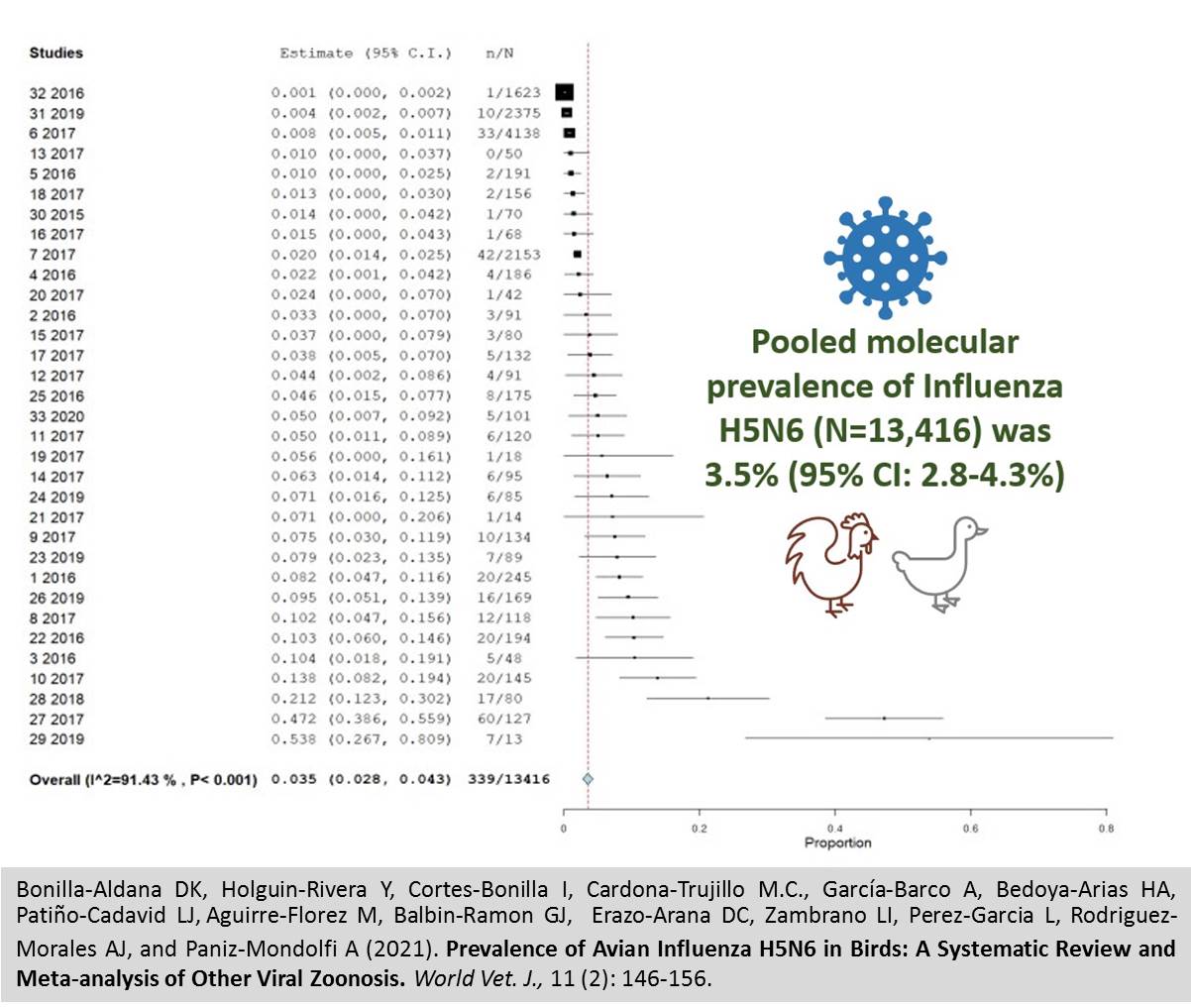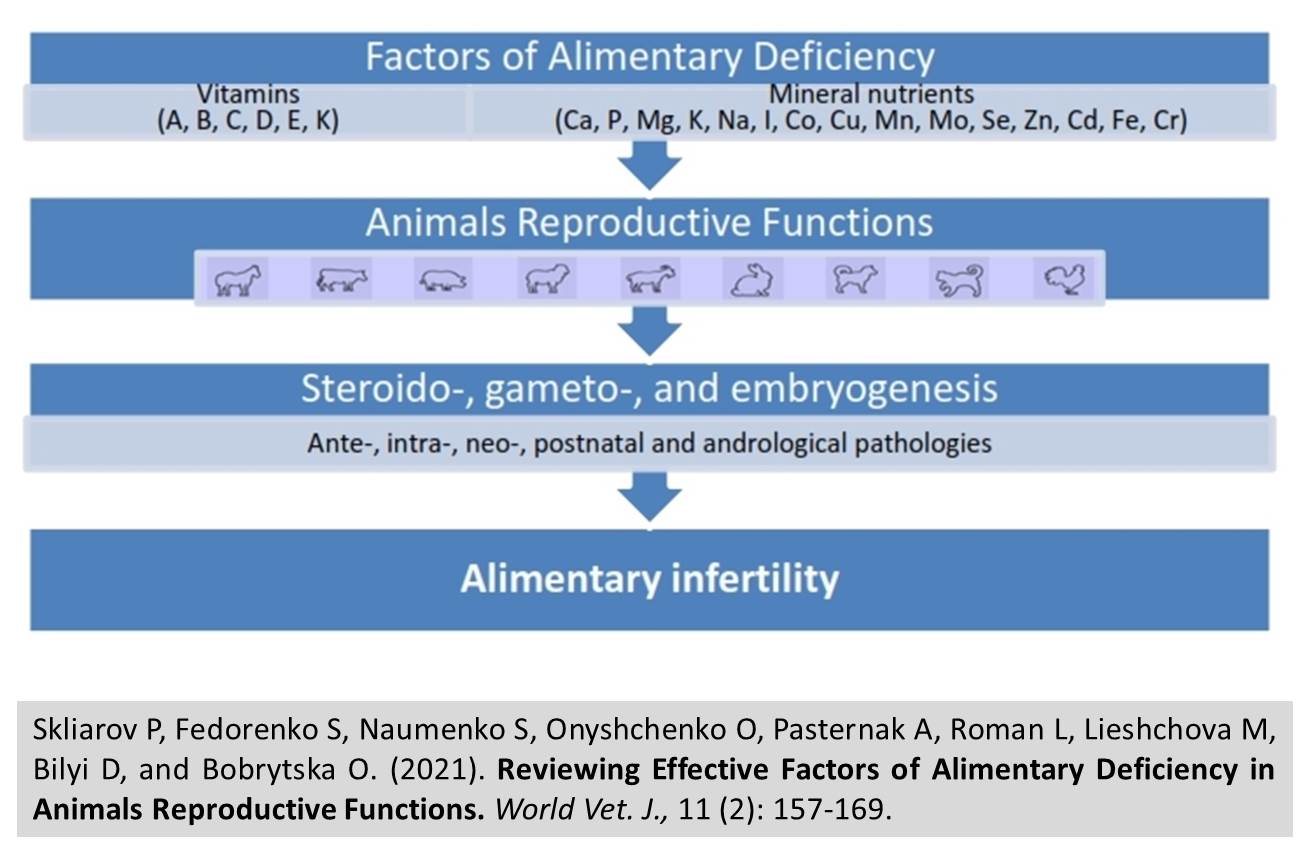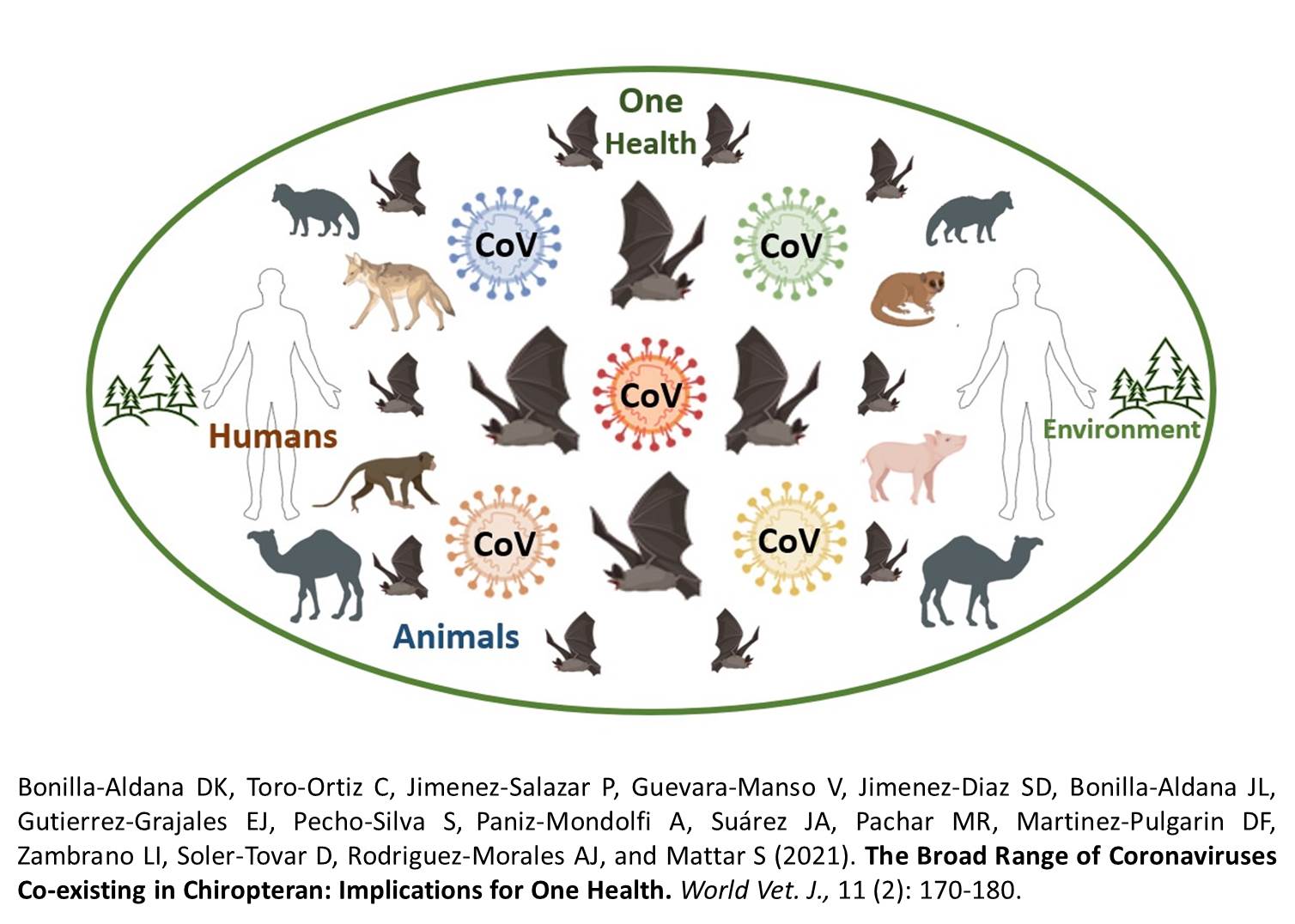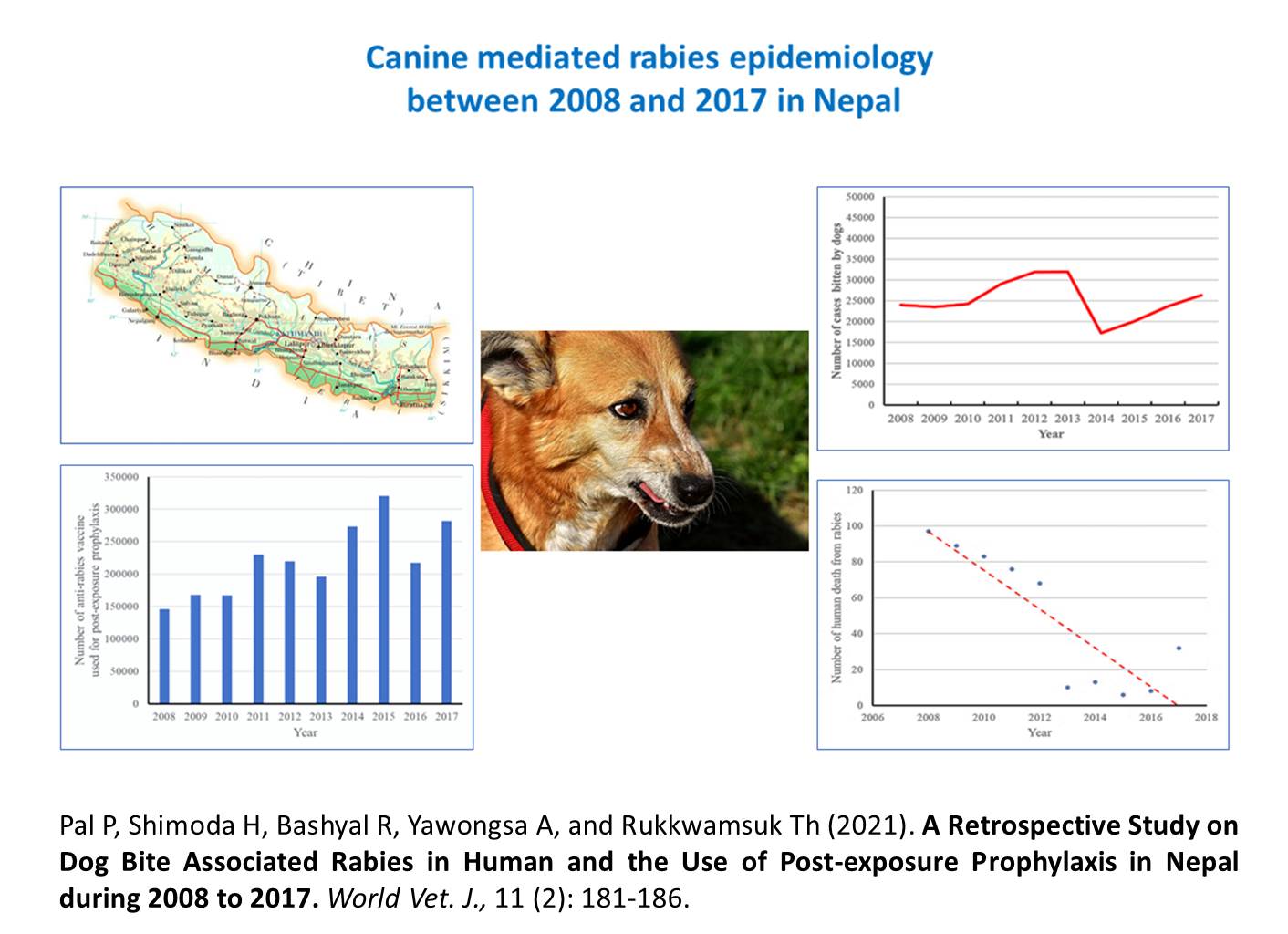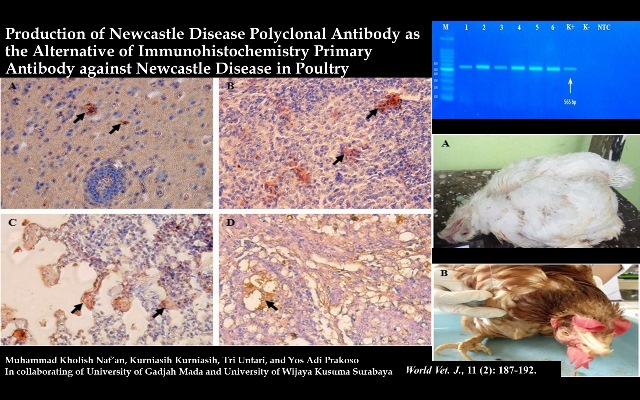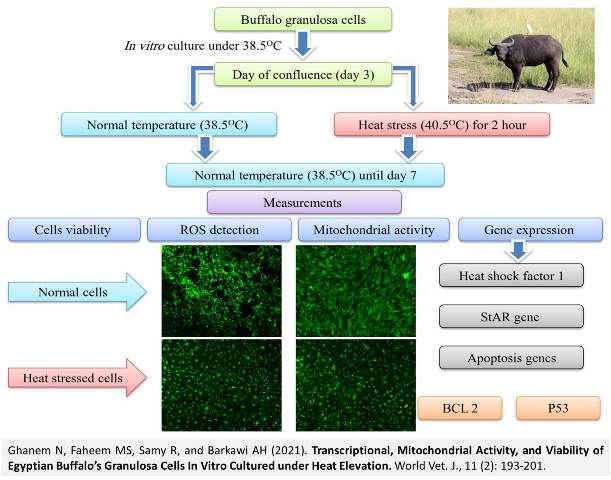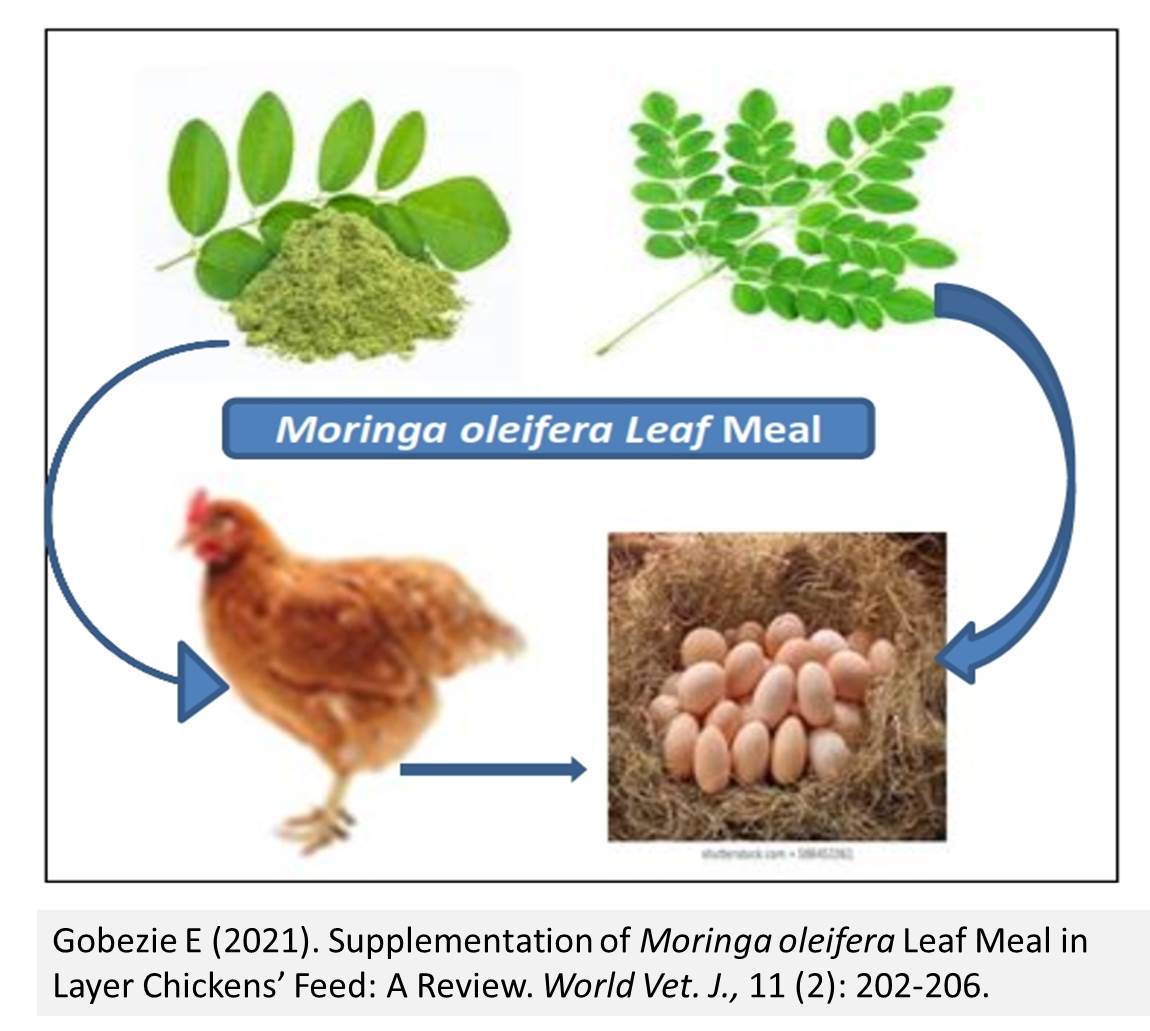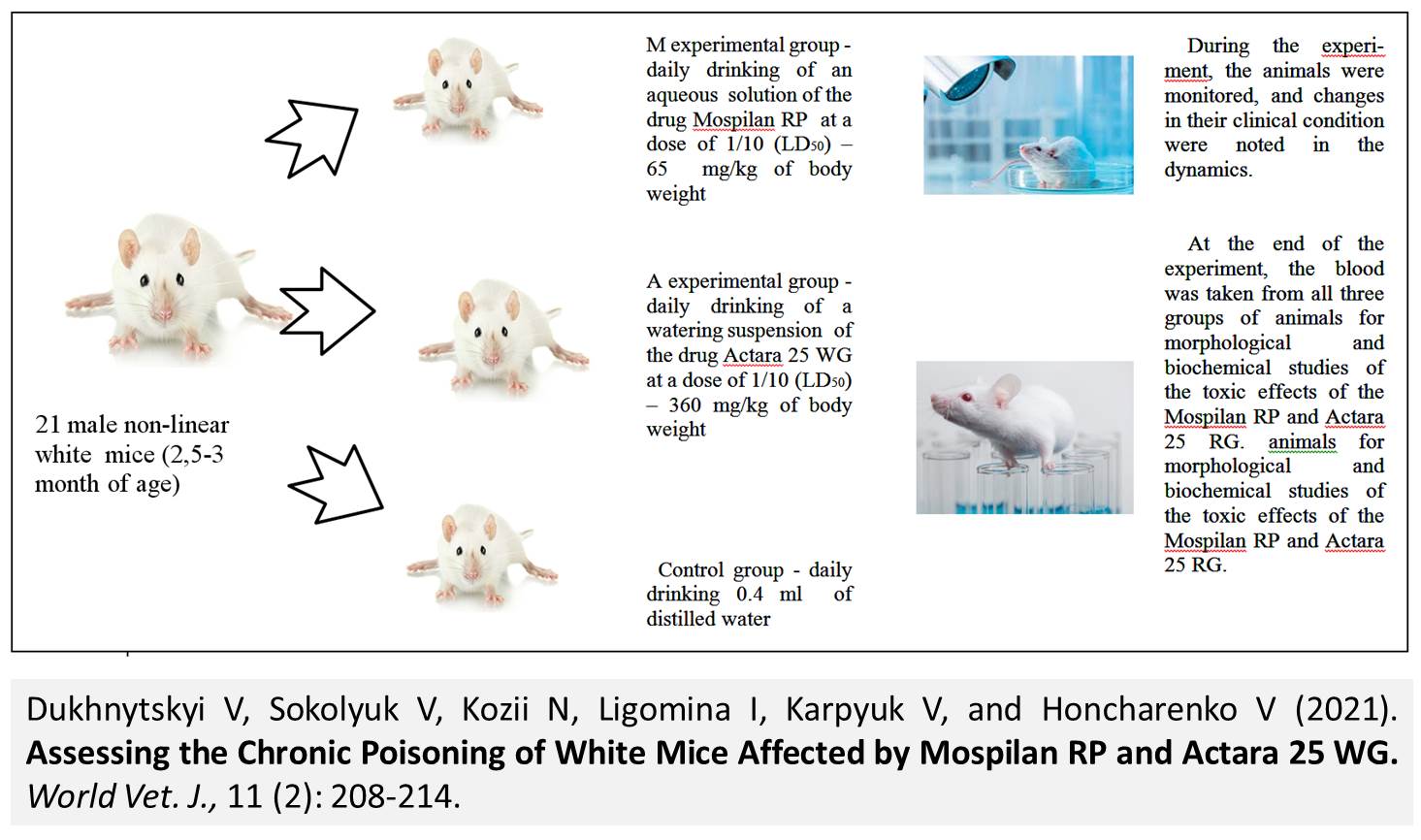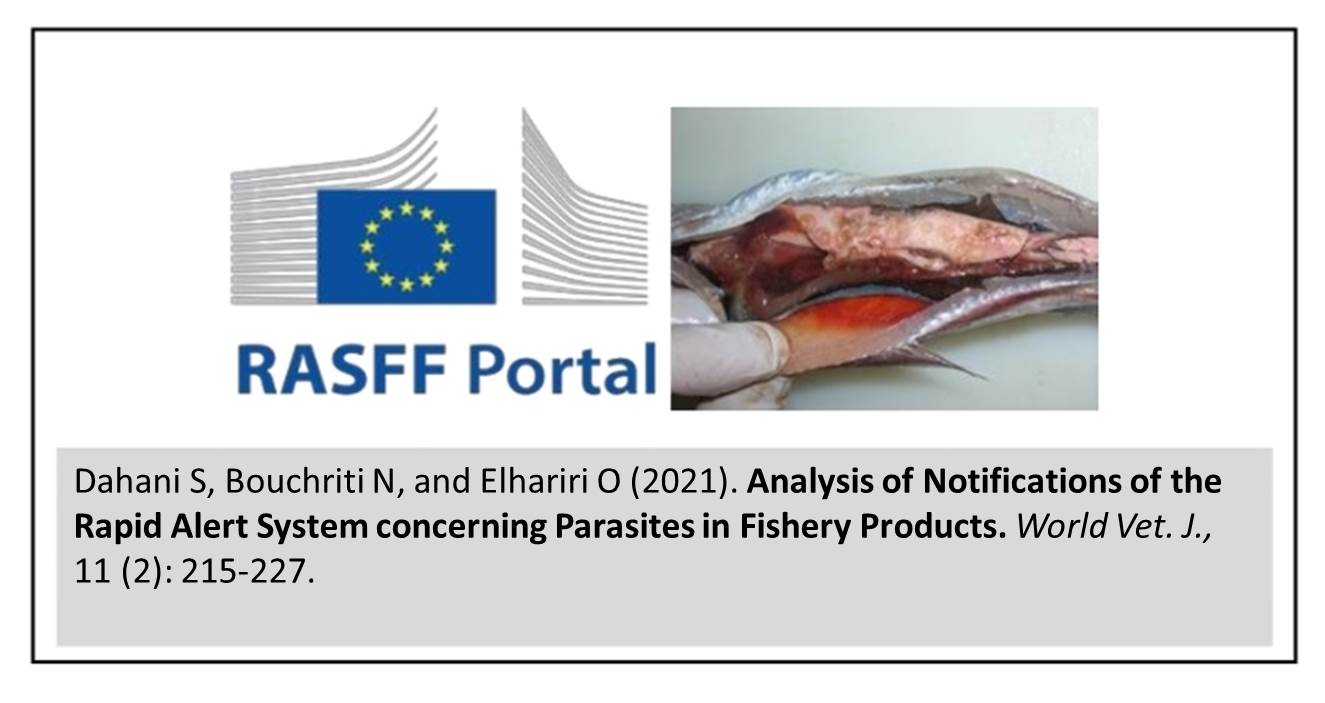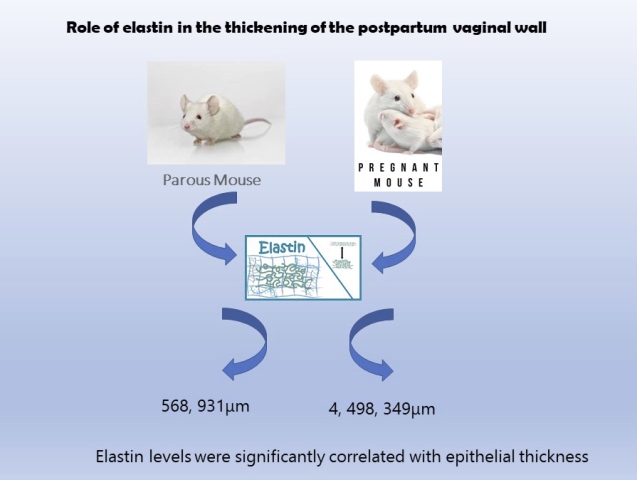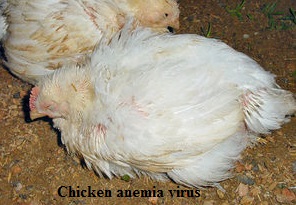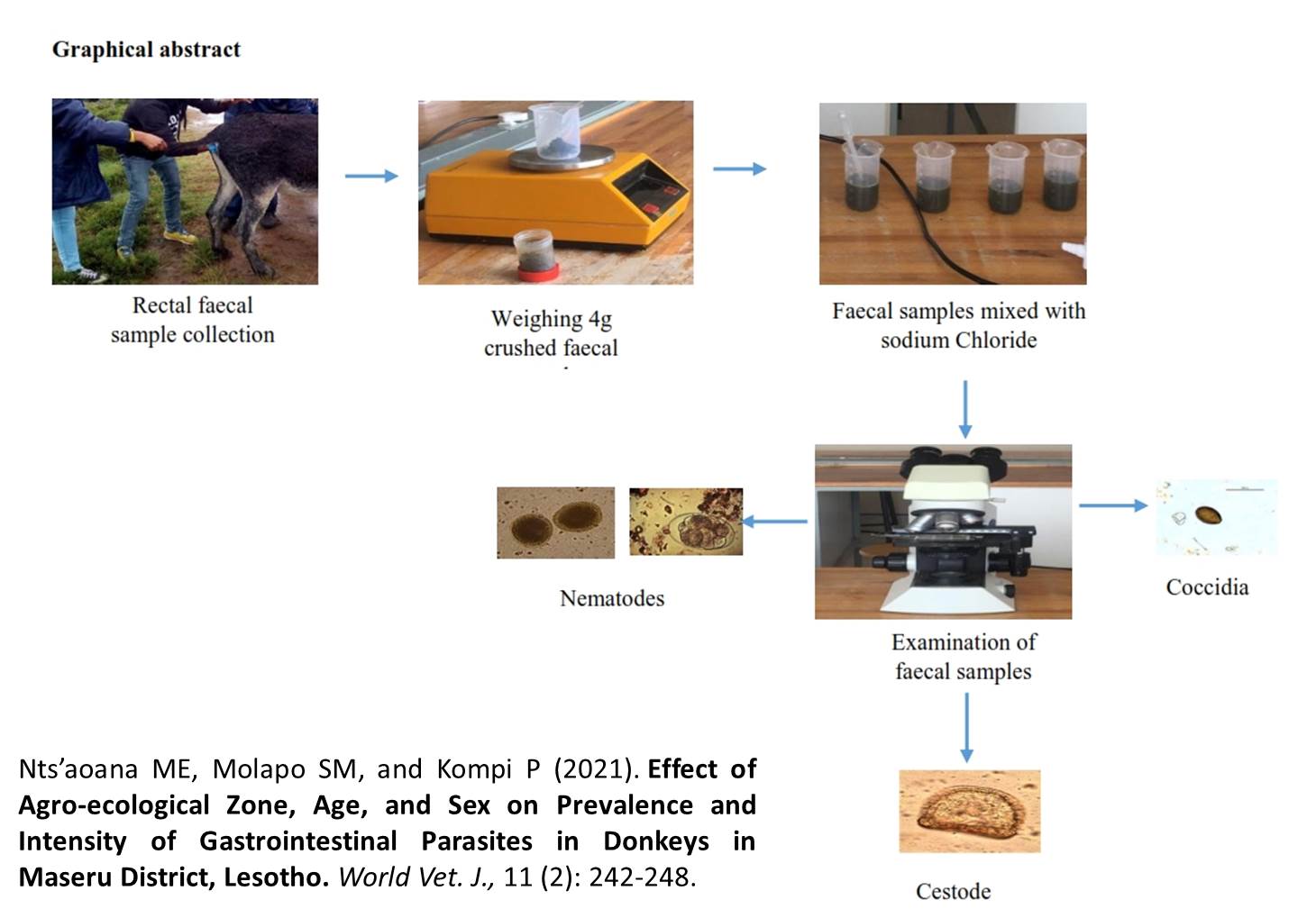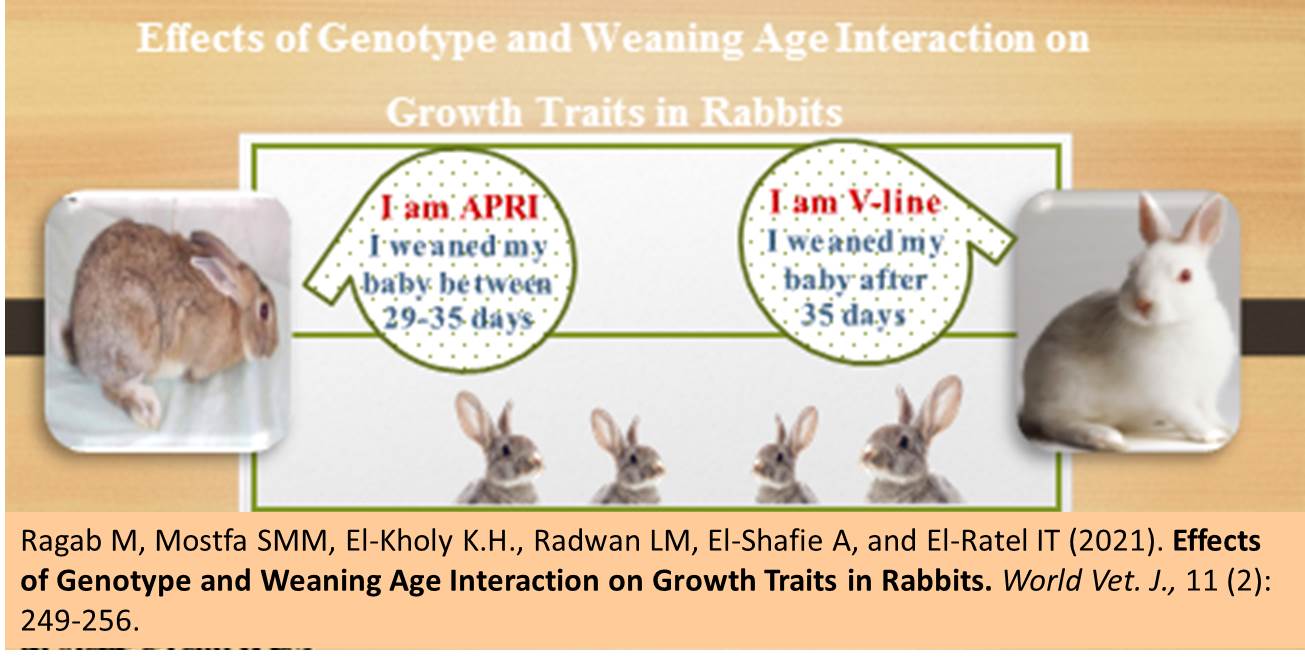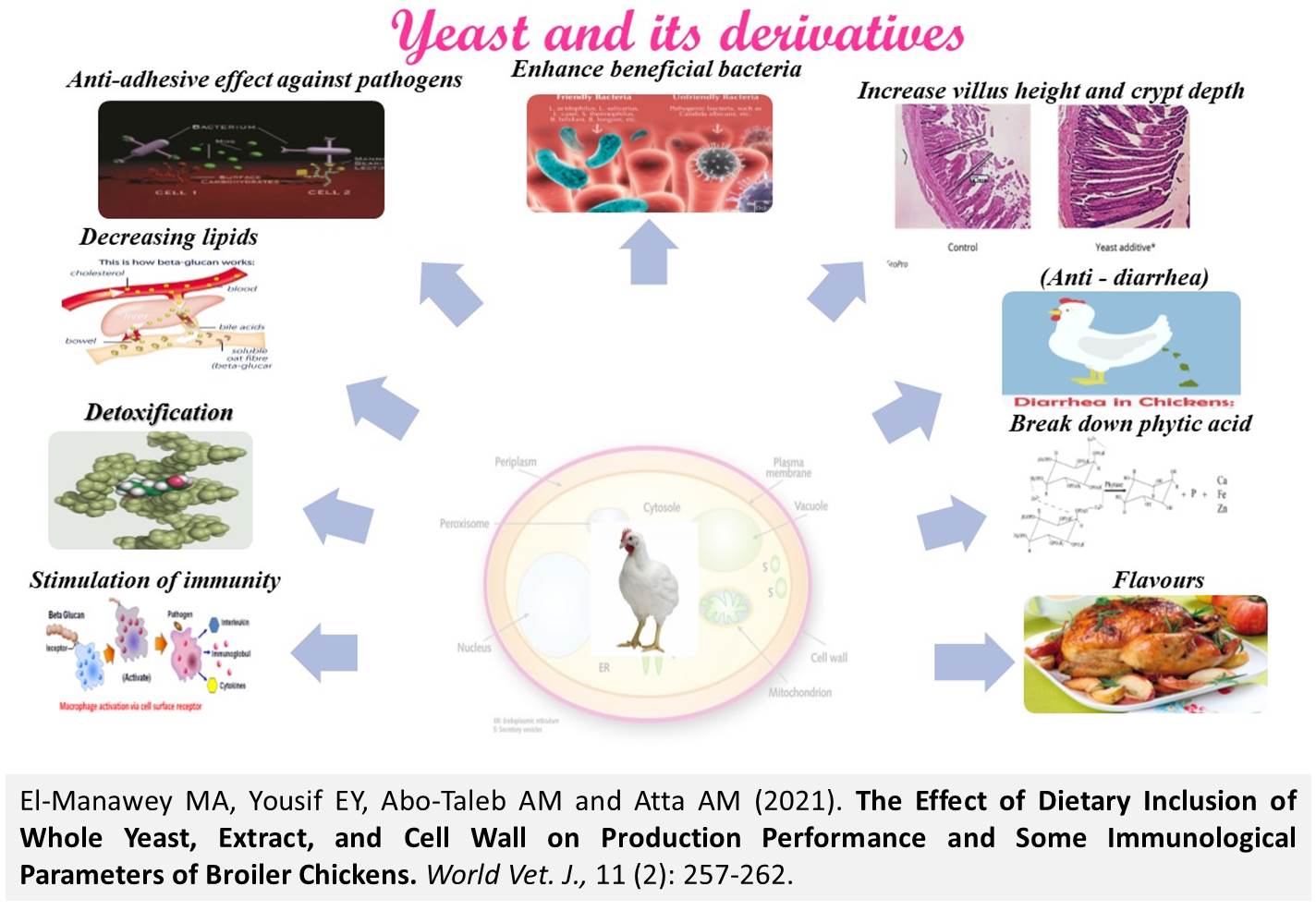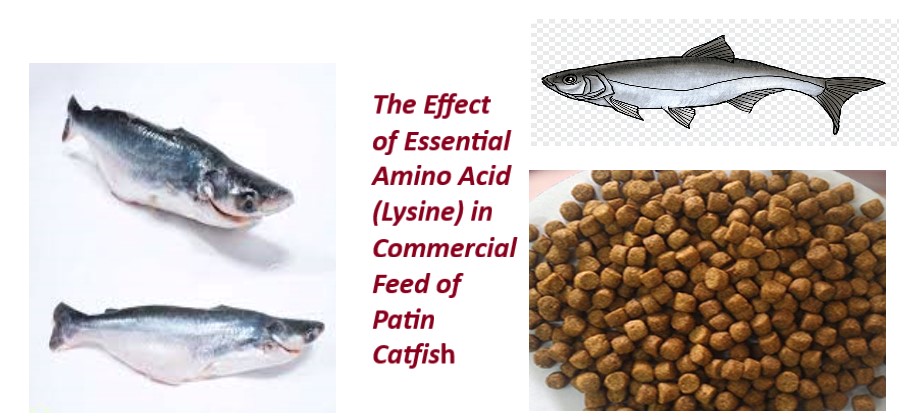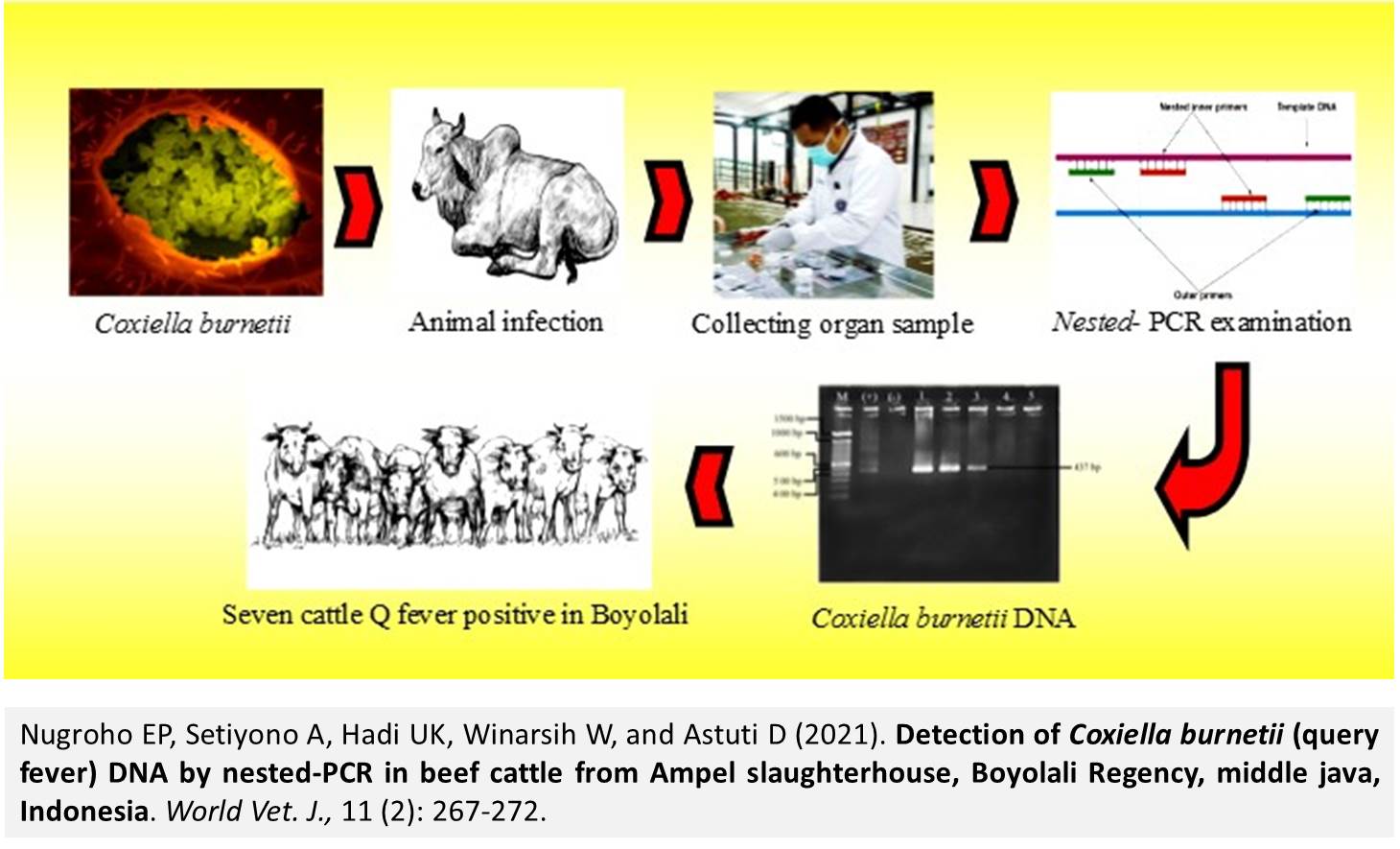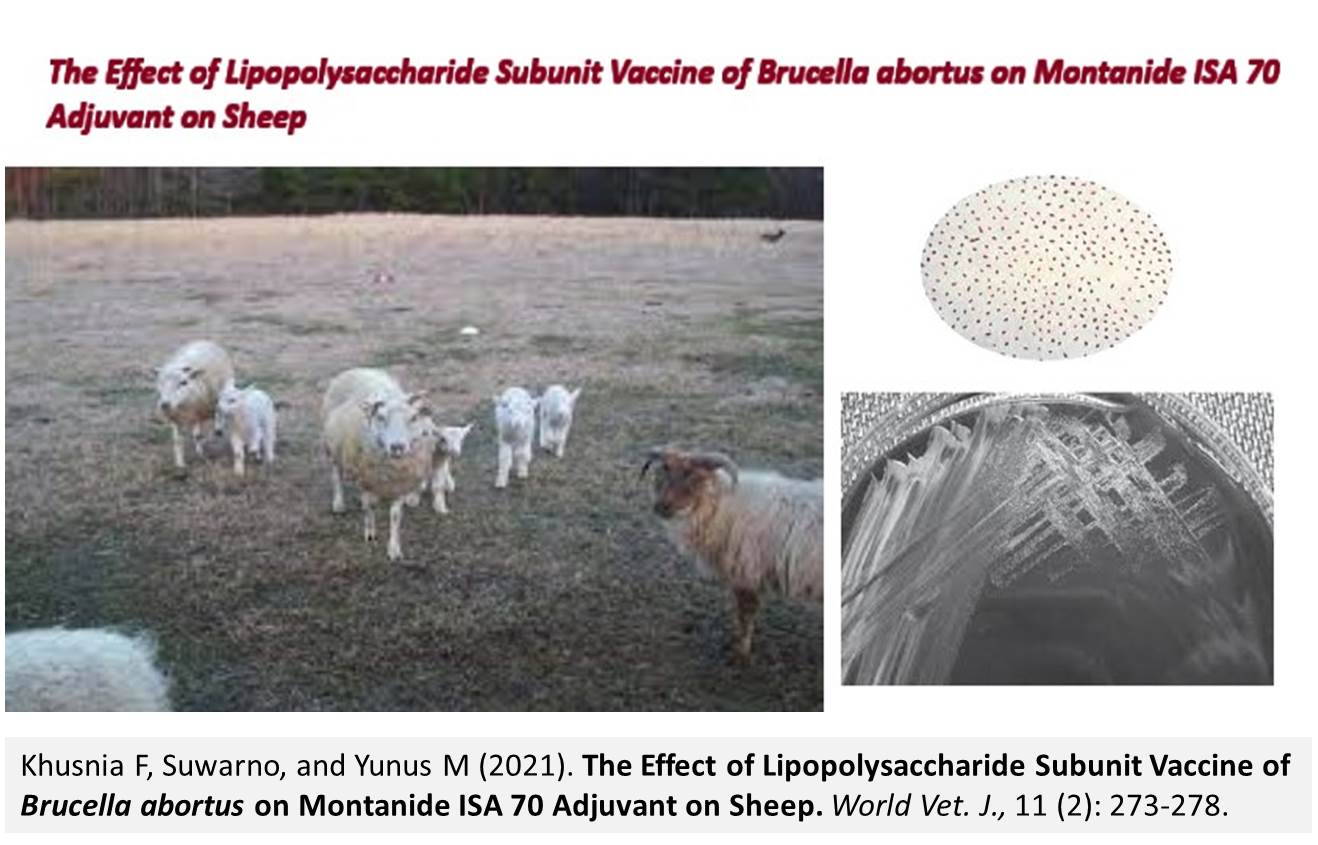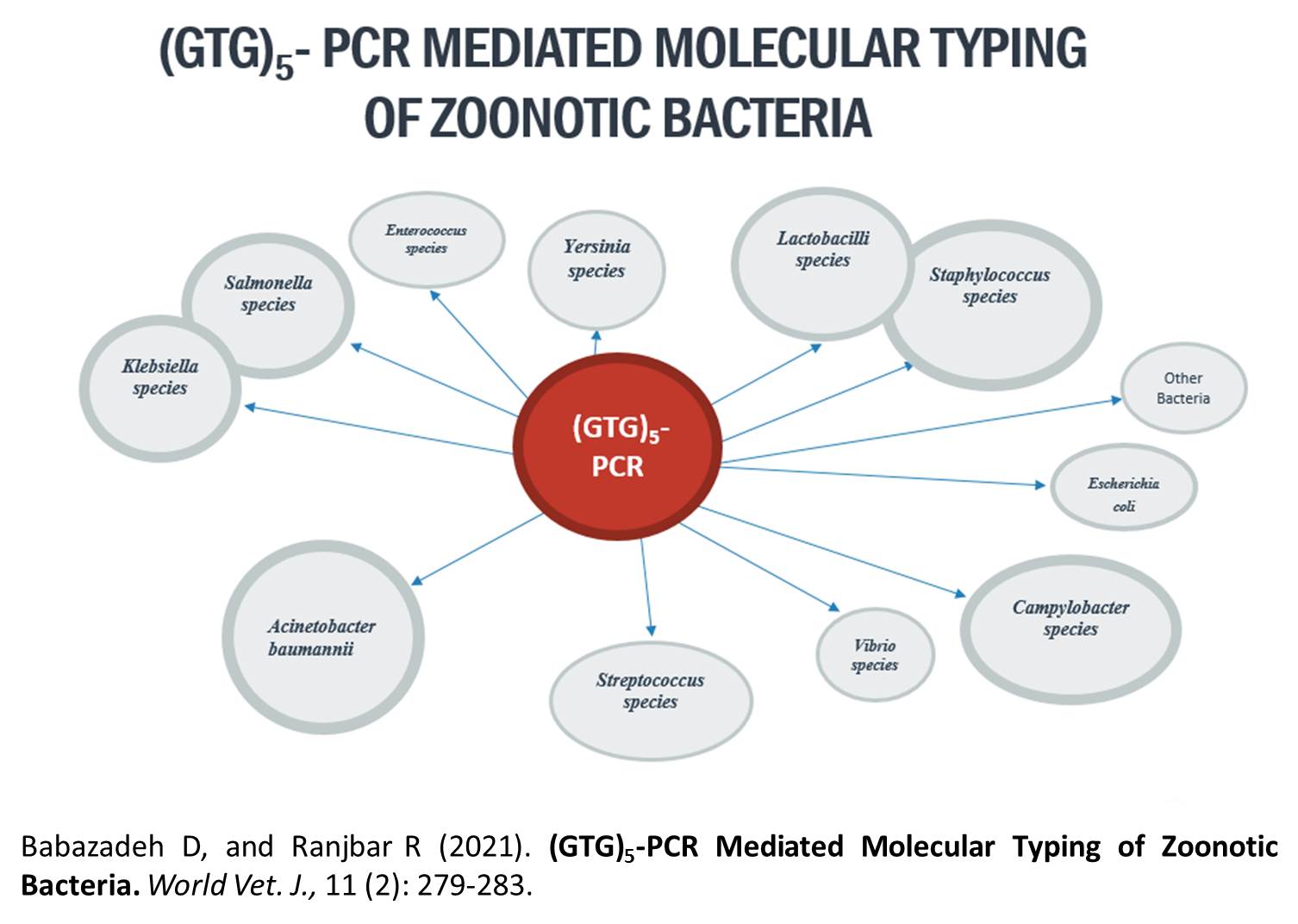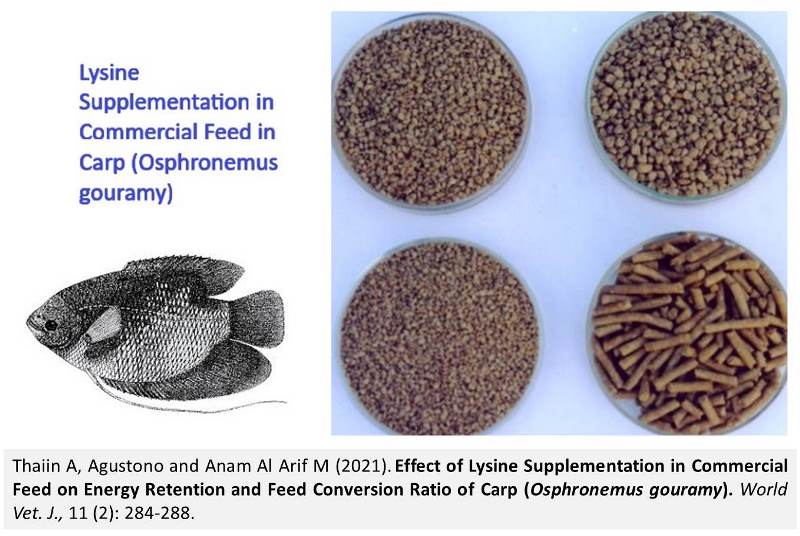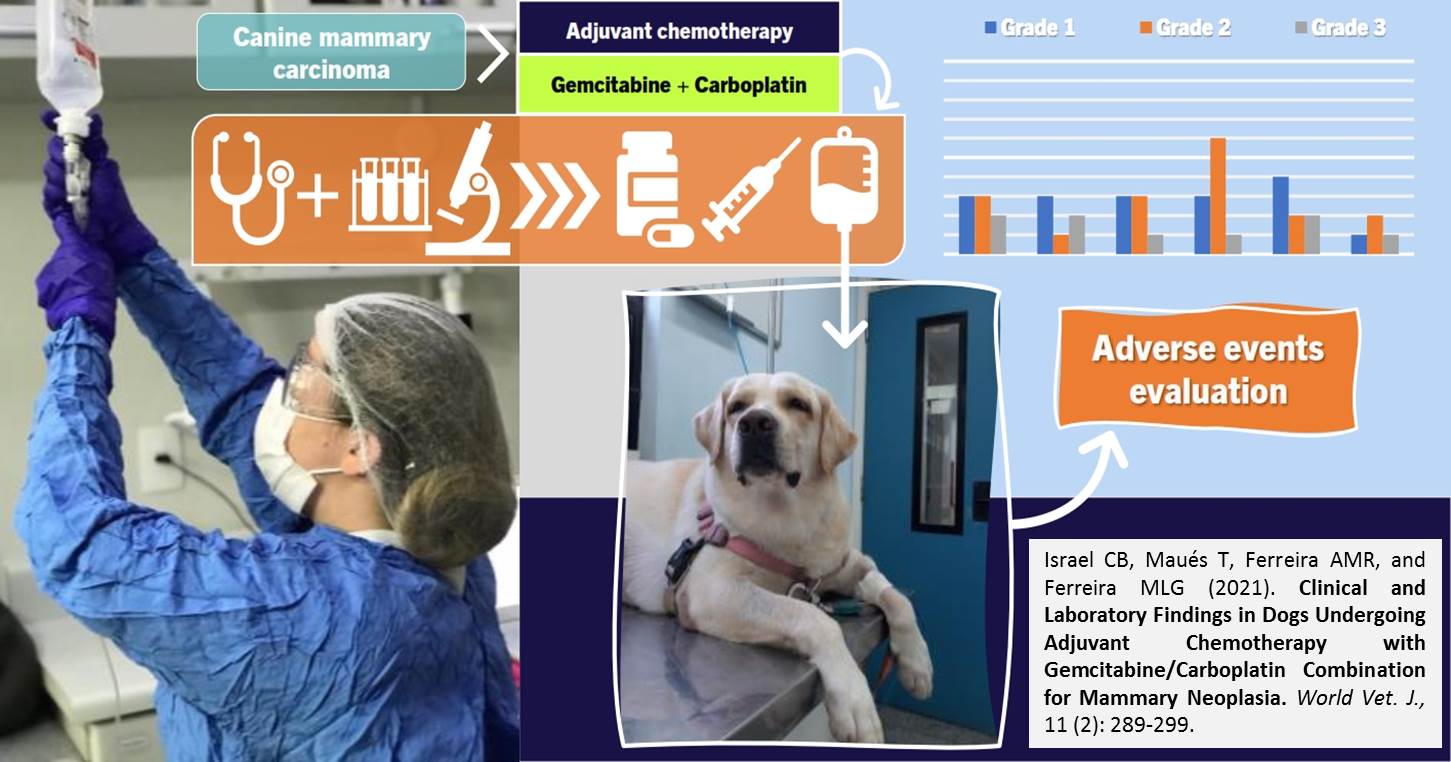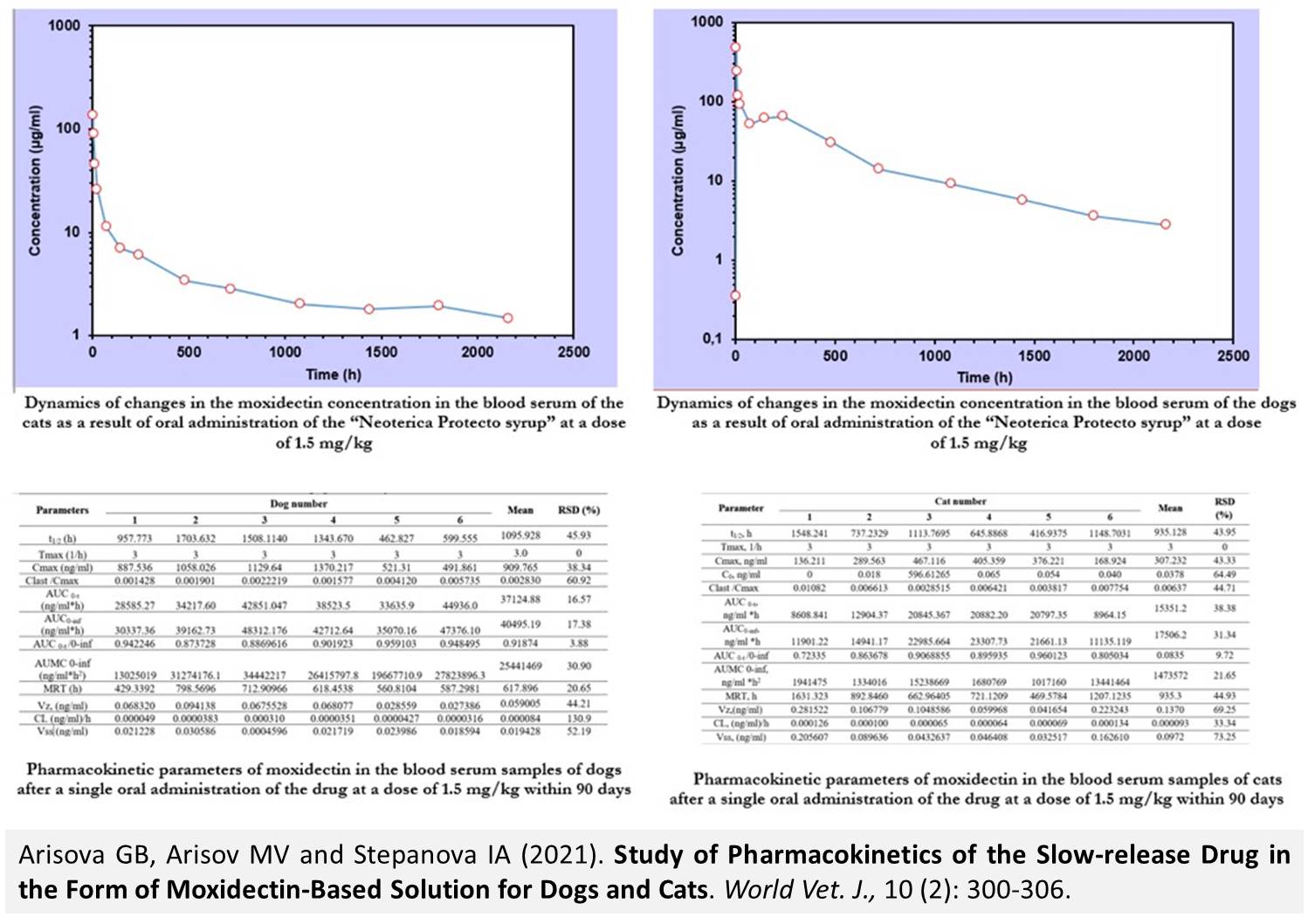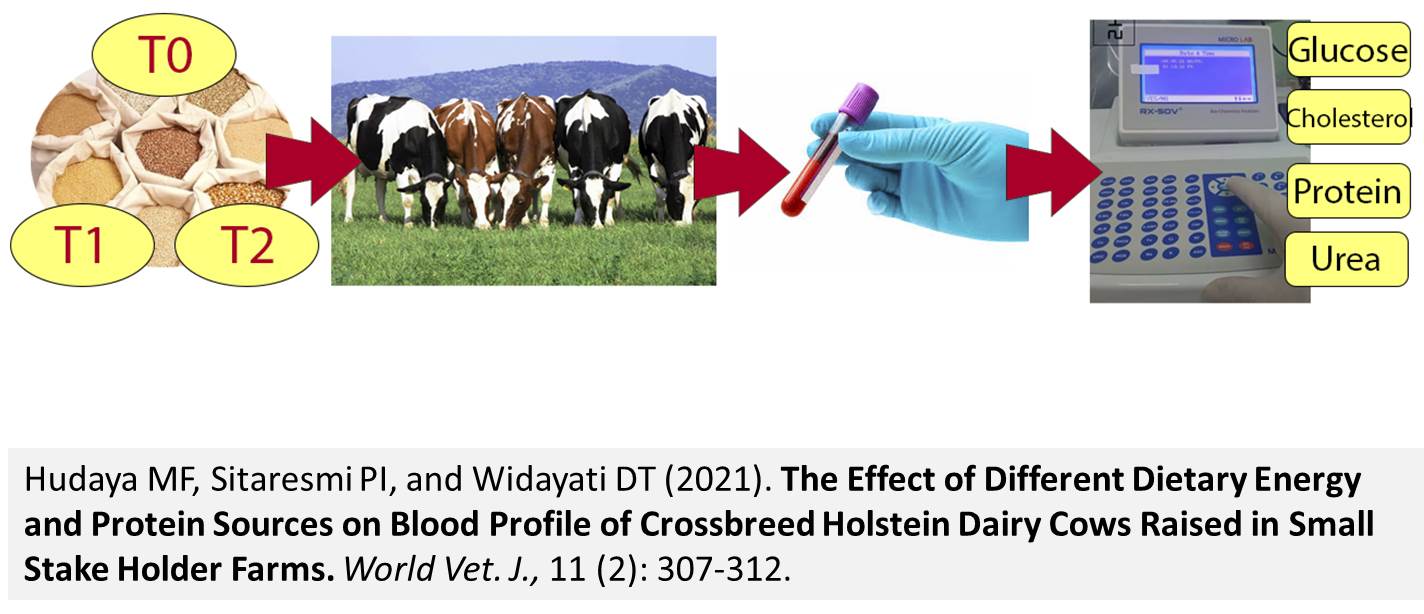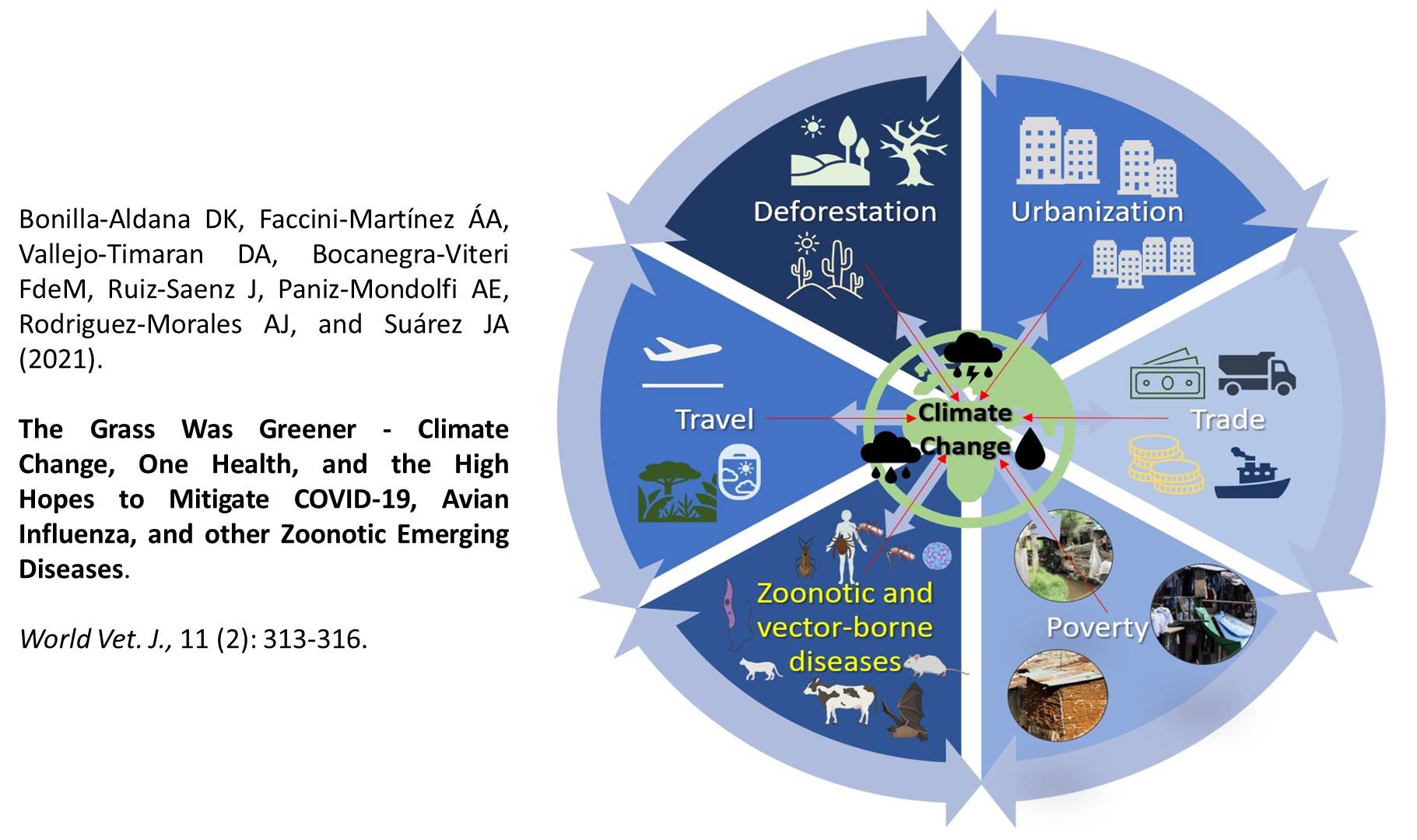Previous issue | Next issue | Archive
![]() Volume 11 (2); June 25, 2021 [Booklet] [EndNote XML for Agris]
Volume 11 (2); June 25, 2021 [Booklet] [EndNote XML for Agris]
Prevalence of Avian Influenza H5N6 in Birds: A Systematic Review and Meta-analysis of Other Viral Zoonosis
|
|
Bonilla-Aldana DK, Holguin-Rivera Y, Cortes-Bonilla I, Cardona-Trujillo M.C., García-Barco A, Bedoya-Arias HA, Patiño-Cadavid LJ, Aguirre-Florez M, Balbin-Ramon GJ, Erazo-Arana DC, Zambrano LI, Perez-Garcia L, Rodriguez-Morales AJ, and Paniz-Mondolfi A.
World Vet. J. 11(2): 146-156, 2021; pii:S232245682100020-11
DOI: https://dx.doi.org/10.54203/scil.2021.wvj20
ABSTRACT: Avian influenza viruses (AIV) are zoonotic pathogens that can potentially affect humans and potentially be epidemic in a region. Birds (such as poultry and wild birds) serve as potential reservoirs for these viruses, highlighting the importance of determining AIV prevalence in the avian population. No systematic reviews have been published on this issue in the world so far. The present systematic literature review following the PRISMA standard, with meta-analysis, used three databases to globally assess the Influenza H5N6 infection in birds (including poultry and wild birds). A model of random-effects meta-analysis was performed to calculate the pooled prevalence and 95% Confidence Interval (95% CI) for the prevalence of Influenza H5N6 infection in birds. A total number of 14,605 articles published from 2015 to 2020 were retrieved. After screening the abstract/title, 37 articles were selected for full-text assessment, and 15 were included for qualitative and quantitative analyses. Of the total number of birds (n = 13,416 birds), the pool prevalence by RT-PCR was 3.5% (95% CI: 2.8-4.3%). From the total, 39.67% of the birds assessed were ducks (family Anatidae), in which pool prevalence was 7.7% (95% CI: 4.4-11.0). In chickens (Gallus gallus domesticus), the pool prevalence was 3.3% (95% CI 1.9-4.8). Vietnam was the country with the highest pool prevalence; 7.9% (95% CI 4.0-11.7%). Bangladesh was the country with the lowest pool prevalence of 0.4% (95% CI 0.2-0.7%). A considerable proportion of infected birds tested positive highlighted the relevance of individual animals as reservoirs of H5N6. Ducks and chickens were found to be positive by RT-PCR in over 3% of the cases. These data suggest their relevance in maintaining zoonotic transmission and their potential implications for epidemics and even pandemics in the near future.
Keywords: H5N6, Influenza, Meta-Analysis, Molecular diagnosis, RT-PCR, Systematic Review
[Full text-PDF] [XML] [Google Scholar] [Crossref Metadata] [Scopus ID: 85109448283] [Export from ePrint] [How to Cite]
Reviewing Effective Factors of Alimentary Deficiency in Animals Reproductive Functions
|
|
Skliarov P, Fedorenko S, Naumenko S, Onyshchenko O, Pasternak A, Roman L, Lieshchova M, Bilyi D, and Bobrytska O.
World Vet. J. 11(2): 157-169, 2021; pii:S232245682100021-11
DOI: https://dx.doi.org/10.54203/scil.2021.wvj21
ABSTRACT: Animal reproduction is one of the main factors limiting the efficiency of livestock production. Its optimal level is possibly achieved when certain conditions are created for animals. As reproduction is a complex reflex process depending on neuroendocrine regulatory mechanisms, the character and strength of stimuli, which, in turn, is due to a number of factors. Under normal conditions, the body of animals is affected by many different factors, which are appropriately transformed and specified by positive or negative reactions. Inhibitory factors include air pool, saturated with harmful substances and gases, ionizing radiation, poor water quality along with altered redox properties, hypokinesia combined with poor unbalanced feeding, systematic chronic stress, presence of toxic substances in feed, and the deficiency of vitamins and other bioantioxidants in feed or their excessive spending. Of the wide range of genetic and paratypic factors of negative impacts on reproductive capacity, the most common one is alimentary, which causes impaired reproductive function due to deficiencies in the rules, regulations, and feeding regime of animals. In particular, the alimentary can be associated with both general malnutrition (starvation) and overfeeding (obesity). However, the alimentary form of infertility mostly occurs due to low-quality diets when the diet lacks vital components (mainly vitamins, macro-, and micronutrients) or the quantitative ratios of the ingredients are violated. This is possible even if the total nutritional value of the diet meets the established requirements for the physiological needs of the body. Vitamins, micro-, and macronutrients are ecologically deficient factors of disturbance of animal reproductive function, the influence of which is observed on all processes of reproduction, from fertilization to the postpartum period and the preservation of young animals. The pathogenesis of their insufficiency is associated with the violation of steroido-, gameto-, and embryogenesis and the emergence of ante-, intra-, neo- and postnatal pathologies, respectively. Therefore, treatments and prevention measures should be aimed at providing animals with biologically complete balanced feeding and replenishment of the body with vitamins and minerals. However, all these issues remain incompletely studied and need further research.
Keywords: Alimentary deficiency, Animals, Reproductive function.
[Full text-PDF] [XML] [Google Scholar] [Crossref Metadata] [Scopus ID: 85109443722] [Export from ePrint] [How to Cite]
The Broad Range of Coronaviruses Co-existing in Chiropteran: Implications for One Health
|
|
Bonilla-Aldana DK, Toro-Ortiz C, Jimenez-Salazar P, Guevara-Manso V, Jimenez-Diaz SD, Bonilla-Aldana JL, Gutierrez-Grajales EJ, Pecho-Silva S, Paniz-Mondolfi A, Suárez JA, Pachar MR, Martinez-Pulgarin DF, Zambrano LI, Soler-Tovar D, Rodriguez-Morales AJ, and Mattar S.
World Vet. J. 11(2): 170-180, 2021; pii:S232245682100022-11
DOI: https://dx.doi.org/10.54203/scil.2021.wvj22
ABSTRACT: Bats are a group of mammals that harbor the most significant number of coronaviruses. The aim of present review article was to analyze the broad spectrum of the coronavirus coexisting in Chiropterans hosts. Bats have certain types of cell receptors that allow them to be the potential hosts of a large number of viruses without the presence of any clinical manifestations, and to be a source of contagion infections for other animals and human species. Emphasis can be placed on five coronaviruses, such as Porcine Epidemic Diarrhea Disease, Severe Acute Diarrhea Syndrome, Middle East Respiratory Syndrome, Severe Acute Respiratory Syndrome, and Severe Acute Respiratory Syndrome 2, which have had significant impacts causing epidemic outbreaks in different parts of the world, and generating implications for both human and animal health. In conclusion, recent research indicated the importance of bats as potential hosts of multiple coroaviruses leading to some zoonotic diseases.
Keywords: Bats, Coronaviruses, Cross-species, Evolution, Spillover, Transmission
[Full text-PDF] [XML] [Google Scholar] [Crossref Metadata] [Scopus ID: 85109436134] [Export from ePrint] [How to Cite]
A Retrospective Study on Dog Bite Associated Rabies in Human and the Use of Post-exposure Prophylaxis in Nepal during 2008 to 2017
|
|
Pal P, Shimoda H, Bashyal R, Yawongsa A, and Rukkwamsuk Th.
World Vet. J. 11(2): 181-186, 2021; pii:S232245682100023-11
DOI: https://dx.doi.org/10.54203/scil.2021.wvj23
ABSTRACT: A 10-year (2008-2017) retrospective canine-mediated human rabies epidemiology was studied to assess the burden of rabies in Nepal. To this end, the number of dog bites, the use of post-exposure prophylaxis (PEP), and human death records from 2008 to 2017 were retrieved from Sukraraj Tropical Hospital, Kathmandu, Nepal. The findings revealed that the number of human rabies occurrences was consistent with minor fluctuations throughout the study period. There were 252,297 dog bite cases in humans recorded between 2008 and 2017. Every month, 2,102 people were bitten by mostly stray dogs. There was a gradual increase in PEP use throughout 10 years. On average, 36,995 PEP dosages were used per year for stray dog bites. The PEP consumption and the number of human deaths were negatively correlated. A total of 482 human rabies deaths were recorded in Nepal during the study period. On average, 49 people died of canine-mediated rabies each year. Although there was an increase in the use of PEP, the number of human deaths and street dog bites recorded were still high. The high mortality due to rabies could then be attributed to the flawed surveillance system and stray dog population management, and not merely the lack of PEP services. Hence, it is recommended that the government agencies and other concerned stakeholders should organize mass vaccination and population management program for stray dogs in order to reduce the country’s rabies burden.
Keywords: Dog bite, Epidemiology, Prophylaxis, Rabies
[Full text-PDF] [XML] [Google Scholar] [Crossref Metadata] [Scopus ID: 85109437116] [Export from ePrint] [How to Cite]
Production of Newcastle Disease Polyclonal Antibody as the Alternative of Immunohistochemistry Primary Antibody against Newcastle Disease in Poultry
|
|
Naf’an MKh, Kurniasih K, Untari T, and Prakoso YA.
World Vet. J. 11(2): 187-192, 2021; pii:S232245682100024-11
DOI: https://dx.doi.org/10.54203/scil.2021.wvj24
ABSTRACT: Newcastle disease (ND) is the most pathogenic viral infection in poultry. Furthermore, the availability of laboratories that support the molecular diagnosis of ND is still limited in Indonesia. The present study aimed to produce ND polyclonal antibody as the alternative of immunohistochemistry primary antibody against ND in poultry. Two adult male New Zealand White rabbits weighed 2.5 kg were vaccinated seven days after the adaptation using intraperitoneal injection of the ND live vaccine at multilevel doses weekly. The serum was collected inactivated, and purified in the sixth week. A total number of 31 chicken samples were collected and their samples of brain, lung, spleen, and intestine were tested using immunohistochemistry and Reverse Transcription Polymerase Chain reaction (RT-PCR). The result showed that 19/31 (61%) were positive against immunohistochemistry and RT-PCR and a total of 12/31 (39%) were negative. Based on the obtained results, immunohistochemistry using ND polyclonal antibody had a similar accuracy with RT-PCR. It can be concluded that ND polyclonal antibody produced by vaccination in the rabbit could be used as the alternative immunohistochemistry primary antibody for diagnosing ND in poultry.
Keywords: Immunohistochemistry, Newcastle disease, Polyclonal antibody, Poultry, RT-PCR
[Full text-PDF] [XML] [Semantic Scholar] [Crossref Metadata] [Scopus ID: 85109423364] [Export from ePrint] [How to Cite]
Transcriptional, Mitochondrial Activity, and Viability of Egyptian Buffalo’s Granulosa Cells In Vitro Cultured under Heat Elevation
|
|
Ghanem N, Faheem MS, Samy R, and Barkawi AH.
World Vet. J. 11(2): 193-201, 2021; pii:S232245682100025-11
DOI: https://dx.doi.org/10.54203/scil.2021.wvj25
ABSTRACT: It is documented that heat stress caused impairment on the reproductive performance of dairy animals. However, there are few reports that have focused on the molecular and intracellular responses of in vitro cultured buffalo granulosa cells during heat elevation. The present study was conducted to investigate the effect of heat elevation during in vitro culture of buffalo granulosa cells on their viability, quality, mitochondrial activity, and transcriptional activity. Granulosa cells were harvested after aspiration of cumulus-oocytes complexes that were collected from abattoir ovaries. The granulosa cells were cultured in vitro either at a normal physiological temperature suitable for oocyte maturation and embryo development (38.5°C) or exposed to the elevated temperature of 40.5°C on day 3 of culture (the first two days were for confluence) for two hours of culture then continued at 38.5°C up to day 7 of culture. The viability of granulosa cells was measured using trypan blue and quality was estimated by measuring the level of intracellular reactive oxygen species (ROS) on day 7. Moreover, metabolic activity was performed by measuring the fluorescent intensity of mitochondria. Moreover, transcriptional activity was done by profiling four selected candidate genes using quantitative real-time PCR. The results indicated that the granulosa cells viability rate significantly decreased in the heat stress group (25.1 ± 3.7), compared to the control group (36.6 ± 5.3) on confluence day (day 3). In addition, the viability rate on the last day of culture (day 7) decreased in heat stress, compared to control (83.7 ± 4.5 and 97.4 ± 0.4, respectively). On the other hand, there was a nonsignificant difference in ROS profile between the control (21.7*104 ± 1.3) and the heat-stressed group (15.7 ± 0.7) on day 7 of culture. However, the mitochondrial fluorescent intensity was higher in the control (21.9 ± 1.9) than in the heat-stressed group (15.4 ± 0.8) on day 7 of culture. The expression of cellular defense (HSF1) and apoptosis-inducing gene (P53) were significantly up-regulated in granulosa cells exposed to heat elevation, compared to the control group. On the other hand, the steroidogenesis-regulating gene (StAR) was down-regulated in granulosa cells cultured under heat shock, compared to the control group. In conclusion, heat stress reduced the viability of granulosa cells by inducing the expression of an apoptosis-related gene (P53) and compromised expression of genes regulating the steroid biosynthesis, which resulted in up-regulation of cell defense gene (HSF1) in an attempt to ameliorate the deleterious effect of heat stress on the biological activity of the granulosa cells.
Keywords: Apoptosis, Granulosa, Heat stress, Gene expression
[Full text-PDF] [XML] [Google Scholar] [Crossref Metadata] [Scopus ID: 85109446023] [Export from ePrint] [How to Cite]
Supplementation of Moringa oleifera Leaf Meal in Layer Chickens’ Feed: A Review
|
|
Gobezie E.
World Vet. J. 11(2): 202-207, 2021; pii:S232245682100026-11
DOI: https://dx.doi.org/10.54203/scil.2021.wvj26
ABSTRACT: As a dietary supplement for animals, Moringa oleifera is very useful because its leaves are very nutritious. Moringa oleifera leaves are rich in fats, proteins, vitamins, and minerals with antimicrobial effects. Leaf tea is used to treat ulcers in the stomach and diarrhea. Moringa leaves are considered healthy food sources and are recommended for anemia from malnutrition due to the high protein, fiber, and iron content of the leaves. Moringa oleifera leaves are primarily used for medicinal and human consumption purposes since they are abundant in antioxidants and other nutrients. Due to the low energy and digestibility of proteins, Moringa oleifera leaf meal supplementation increases feed intake and feed conversion ratio, as well as decreasing egg mass yield, percentage of egg production, and egg weight. More research in these areas is required to make full use of the potential advantages of the Moringa oleifera plant as layer feed.
Keywords: Layer chicken, Laying performance, Leaf meal, Moringa oleifera
[Full text-PDF] [XML] [Semantic Scholar] [Crossref Metadata] [Scopus ID: 85109439342] [Export from ePrint] [How to Cite]
Assessing the Chronic Poisoning of White Mice Affected by Mospilan RP and Actara 25 WG
|
|
Dukhnytskyi V, Sokolyuk V, Kozii N, Ligomina I, Karpyuk V, and Honcharenko V.
World Vet. J. 11(2): 208-214, 2021; pii:S232245682100027-11
DOI: https://dx.doi.org/10.54203/scil.2021.wvj27
ABSTRACT: Neonicotinoids are a relatively small group of organic compounds that are widely used in crop production as insecticides. They are highly toxic to insects, and much less toxic to mammals, including humans. Accordingly, the present study aimed to investigate the effects of chronic toxicity of insecticides from the group of neonicotinoids Mospilan RP (active substance acetamiprid) and Actara 25 WG (active substance thiamethoxam) on white mice. The chronic toxicity was induced by daily internal introduction of Mospilan RP and Actara 25 WG to mice for 30 days at the doses of 1/10 of Median Lethal Dose reported as 65 and 363 mg/kg of body weight, respectively. The affected mice showed thrombocytosis, neutrophilic leukocytosis, and lymphocytopenia. Blood plasma hyperproteinemia in mice treated with Mospilan RP and Actara 25 WG was characterized by an increase in globulins content by almost 30.0% in both groups. In Mospilan RP and Actara 25 WG treated groups, there was a reduction in urea content by 43.6% and 31.5%, respectively, an increase in aspartate aminotransferase activity by 80% and 60.0%, and γ-glutamyltranspeptidase by 80% and almost 400%, respectively. Compared to the control group, the activity of alanine aminotransferase increased to 23.0% only in mice that were given Mospilan RP but not in mice that were given Actara 25 WG.
Keywords: Actara 25 WG, Chronic Toxicity, Insecticides Toxicity, Mospilan PP, Neonicotinoids, White Mice
[Full text-PDF] [XML] [Google Scholar] [Crossref Metadata] [Scopus ID: 85109425096] [Export from ePrint] [How to Cite]
Analysis of Notifications of the Rapid Alert System concerning Parasites in Fishery Products
|
|
Dahani S, Bouchriti N, and Elhariri O.
World Vet. J. 11(2): 215-227, 2021; pii:S232245682100028-11
DOI: https://dx.doi.org/10.54203/scil.2021.wvj28
ABSTRACT: Fish and fishery products are one of Morocco’s most important export products. Fish parasitism is a natural worldwide phenomenon. Fish parasites have a very wide distribution and are found in both the northern and the southern hemispheres of the globe. The present study aimed to assess parasitic infestation in fishery products by analyzing notifications available in the European rapid alert system for food and feed. The analysis involved 663 notifications registered from 2001 to 2019 on the grounds of parasitic infestation. For Morocco, 651 notifications concerning the different exported food products were analyzed. Among the 663 notifications for the presence of parasites, 161 (24.3%) were border rejections. A total number of 20 countries have been detected with the presence of parasites in their exported fish and fish products. The main fish species concerned with this hazard were Hake (26%), Silver Scabbardfish (10.5%), and Angler (9.3%). In Morocco, among the 651 notifications, 373 concerned with seafood (57.2%). The number of border rejections of fishery products was 220 that is 33.8% of overall notifications. Fish and fish products category are the most concerned with 170 rejections (26.1%), with 64 notifications due to the presence of parasites (37.6%). The Silver Scabbardfish was the species most affected by parasite infestations (23.5%), followed by European Anchovy (12.5%) and Swordfish (10.9%). In conclusion, the nematode Anisakis is the most common parasite in fish infestation while the plerocercoïd larvae of the Cestoda Gymnorhynchus gigas seems to have a predilection to infest the Atlantic Pomfret (Brama brama).
Keywords: Fish, Morocco, Notification, Parasite, Rapid alert system for food and feed
[Full text-PDF] [XML] [Google Scholar] [Crossref Metadata] [Scopus ID: 85109425440] [Export from ePrint] [How to Cite]
Role of Elastin Expression in Thickening the Postpartum Vaginal Wall in Virgin and Postpartum Rat Models
|
|
Setyaningrum T, Listiawan MY, Tjokroprawiro BA, Santoso B, Prakoeswa CRS, and Widjiati W.
World Vet. J. 11(2): 228-234, 2021; pii:S232245682100029-11
DOI: https://dx.doi.org/10.54203/scil.2021.wvj29
ABSTRACT: Childbirth induces a number of alterations, including ligament weakening and increased vaginal distensibility. The occurrence of vaginal laxity or distensibility is associated with the vaginal wall and introitus overstretching during vaginal parturition while the pathophysiology is due to increased levator dimension and trauma to the levator ani muscle through avulsion (macrotrauma) or overdistension (microtrauma). Elastin is an extracellular matrix protein that confers elastic properties to organs and tissues, particularly those requiring elasticity. Elastin plays a vital role in the functioning of numerous tissues, such as the lungs, blood vessels, heart valves, ligaments, tendons, and skin. It is also a component of the vaginal mucosa. The aim of the present was to evaluate the role of elastin in the thickening of the postpartum vaginal wall composed of epithelial mucosa, and to understand the mechanism underlying vaginal laxity or distensibility within parous and nulliparous animal models. A total of 32 female white rats (Rattus norvegicus) were used in the present study. They were divided into two groups, each group consisting of 16 rats. The control group (C0) consisted of virgin nulliparous rats, which were sacrificed on the second day after vaginal parturition. Pregnant rats (group C1) were sacrificed on the second day after vaginal parturition. The median elastin expression in group C1 was higher (3 ± 0.56) than group C0 (2.85 ± 0.75). The mean thickness of the vaginal mucosal epithelium in group C0 (56,8 931µm) was greater than group C1 (44,98 349µm). The comparison of vaginal mucosal epithelium thickness between the two groups indicated a significant difference between groups C0 and C1. Elastin levels were significantly correlated with epithelial thickness. The expression of elastin significantly affects the vaginal wall thickness, which further affects vaginal laxity or vaginal distensibility.
Keywords: Distensibility, Elastin, Vaginal wall, Animals
[Full text-PDF] [XML] [Google Scholar] [Crossref Metadata] [Scopus ID: 85109453853] [Export from ePrint] [How to Cite]
Molecular Characterization of Chicken Anaemia Virus Circulating in Commercial Poultry Flocks in Egypt during 2020
|
|
Abdelhalim A, Samir A and Yehia N.
World Vet. J. 11(2): 235-241, 2021; pii:S232245682100030-11
DOI: https://dx.doi.org/10.54203/scil.2021.wvj30
ABSTRACT: Chicken Anemia Virus (CAV) is an extremely contagious immunosuppressive disease causing high economic losses in poultry production. In the present study, tissue samples (bone marrow, thymus, and spleen) were collected from 86 different broiler chicken farms located in fourteen governorates in Egypt during 2020. They suffered from retard growth, weakness, and a drop in egg production with an observed mortality rate ranged 5-15%. A total of 26 samples were positive for CAV using PCR in six governorates in Lower Egypt with a 30% incidence rate, especially in Sharkia (78%), Ismailia (62.5%), and Alexandria (60%). The viral protein1 (VP1) gene of CAV was genetically characterized by sequencing of 10 selected viruses in six governorates. revealing that all Egyptian strains were clustered into two groups (A, B) that was distinct from vaccine strains (Del-Ros, Cux-1, and 26PA) which were clustered in group C. The seven Egyptian viruses in this study (A-Egypt-AN1-2020 to A-Egypt-AN7-2020) were clustered with the viruses from Japan, Argentina, and Malaysia in group A, and the other three viruses (A-Egypt-AN8-2020, A-Egypt-AN9-2020, A-Egypt-AN10-2020) were clustered with the viruses from Nigeria, and India in group B. The Egyptian viruses in the current study acquired new specific mutations clustering them into new subgroups (2A, 2B). By mutation analysis comparing with Del-Rose reference strains, V75I, M97L, and K139Q, E144Q were recorded in all viruses in the group A and B. All Egyptian viruses in the current study had specific new mutations at Y13N, H22N. Moreover, mutation at G74E in Egyptian viruses recorded in the current study was related to sub group 2A, I83V in three strains (A/Egypt/AN1/2020, A/Egypt/AN2/2020, A/Egypt/AN4/2020), and S140A in the hypervariable region was found in four strains (A/Egypt/AN1/2020, A/Egypt/AN2/2020, A/Egypt/AN4/2020 and A/Egypt/AN5/2020) in subgroup 2A. Furthermore, Q139 and Q144 amino acid substitutions, which are important in viral replication, were observed in all viruses. The field viruses in the study were distinct from the vaccinal strains by phylogenetic analysis and A.A. identity. In conclusion, the CAV was continuously circulating in Egypt from different genotypes. It acquired new specific mutations clustering them in a new subgroup, and it was distinct from vaccinal strains. Therefore, it is important to conduct continuous monitoring on the genetic evolution of CAV and further studies on the pathogenicity of the virus and the vaccine efficacy.
Keywords: Chicken Anemia Virus, Egypt, Genetic evolution, Viral protein 1 gene
[Full text-PDF] [XML] [Google Scholar] [Crossref Metadata] [Scopus ID: 85109462578] [Export from ePrint] [How to Cite]
Effect of Agro-ecological Zone, Age, and Sex on Prevalence and Intensity of Gastrointestinal Parasites in Donkeys in Maseru District, Lesotho
|
|
Nts’aoana ME, Molapo SM, and Kompi P.
World Vet. J. 11(2): 242-248, 2021; pii:S232245682100031-11
DOI: https://dx.doi.org/10.54203/scil.2021.wvj31
ABSTRACT: Gastrointestinal parasites are considered to be silent killers of animals. The objective of the current study was to determine the effect of the agro-ecological zone, age, and sex on the parasite prevalence and fecal egg/oocyst count in donkeys residing in Lesotho. A total number of 720 fecal samples were collected rectally from 120 indigenous donkeys that were randomly selected from the highlands, foothills, and lowlands of Maseru district, Lesotho. The fecal samples were collected every two months for one year and examined using the floatation technique. The overall prevalence for nematodes, coccidia, and cestodes in donkeys were 87.78%, 4.31%, and 1.53%, respectively. The highest nematode prevalence and intensity were detected in the donkeys of highlands. The coccidian infection was lower in the lowlands while cestodes infection was more prevalent in the foothills. Donkey’s age had an impact on the nematode fecal egg load but did not affect the prevalence of nematodes in donkeys. Age did not significantly affect the prevalence and fecal egg/oocyst count of cestodes and coccidia. Male donkeys had a higher prevalence and fecal egg count of cestodes. In conclusion, the nematodes were found to be the major gastrointestinal parasites of donkeys in the Maseru district. Therefore, there is a need to design a sustainable strategy aimed at controlling the gastrointestinal parasites in donkeys.
Keywords: Agro-ecological zone, Eimeria, Fecal egg count, Helminth, Prevalence
[Full text-PDF] [XML] [Google Scholar] [Crossref Metadata] [Scopus ID: 85109425043] [Export from ePrint] [How to Cite]
Effects of Genotype and Weaning Age Interaction on Growth Traits in Rabbits
|
|
Ragab M, Mostfa SMM, El-Kholy K.H., Radwan LM, El-Shafie A, and El-Ratel IT.
World Vet. J. 11(2): 249-256, 2021; pii:S232245682100032-11
DOI: https://dx.doi.org/10.54203/scil.2021.wvj32
ABSTRACT: Weaning age is an important factor that affects the growth and health of weaned animals. Therefore, the current experiment was conducted to study genotype (G) and weaning age (WA) interaction (G×WA) effects on growth traits of the animals belonged to two lines of rabbits (APRI and V line) reared under Egyptian conditions. Multiparous doe rabbits were serviced to obtain 225 litters with 1800 young rabbits at weaning. The weaning ages ranged from 26 to 43 days where the young rabbits were weaned at different ages (≥28 days, WA1; 28 < Treatment ≥ 35 days, WA2; 35 < Treatment ≥ 40 day, WA3 and 40< Treatment, WA4). Body weight (BW) from 4 to 16 weeks of age and corresponding average daily gain (ADGt1-t2) were measured. The BW significantly increased in APRI rabbits, compared to those in V line at the different ages where at the end of the fattening period, the difference was 105 g per animal with higher ADG. Regarding the weaning age effects, positive effects were observed where the highest BW was observed at the fattening period. The ADG of rabbits weaned in late weaning was higher than in early weaning with significant differences. The observed results suggest the existence of relevant G×WA interaction for the investigated traits. Therefore, the weaning age of 29-35 days is recommended for young APRI rabbits while it is suggested to wean the V rabbits after 35 days. The study confirmed that early weaning is not preferable for the rabbit under Egyptian conditions and it is better to wean young rabbits at the minimum age of 30 days to achieve the best BW and growth rate.
Keywords: Fattening period, Genotype, Growth traits, Rabbit, Weaning age
[Full text-PDF] [XML] [Google Scholar] [Crossref Metadata] [Scopus ID: 85109437008] [Export from ePrint] [How to Cite]
The Effect of Dietary Inclusion of Whole Yeast, Extract, and Cell Wall on Production Performance and Some Immunological Parameters of Broiler Chickens
|
|
El-Manawey MA, Yousif EY, Abo-Taleb AM and Atta AM.
World Vet. J. 11(2): 257-262, 2021; pii:S232245682100033-11
DOI: https://dx.doi.org/10.54203/scil.2021.wvj33
ABSTRACT: A total number of 192 male one-day-old broilers chickens were randomly divided into four treatment groups of 48 chickens. Chickens of group one fed a plain diet without any supplement (control), while the diets ib groups two, three, and four were supplemented with Whole Yeast (WY, Saccharomyces cerevisiae, 0.1%), Yeast Cell Wall (YCW, 0.3 %), and Yeast Extract (YE, 0.07 %), respectively. At the end of the experimental period (35 days), the bodyweight of chickens and the feed intake of each cage were measured, and then the feed conversation ratio was calculated. Blood samples were also collected to measure the serum components and relative spleen, bursa of Fabricius, and thymus gland. The results obtained indicated that all productive performance parameters improved in response to the feeding supplementation. Blood parameters indicated that the treated groups had a significantly higher level of serum total protein and albumin as well as significantly lower serum total lipids and cholesterol. The enzyme activities of ALT, AST, and ALP were significantly reduced by WY, YCW, and YE supplementation. The relative organ weights of the spleen, bursa of Fabricius, and thymus increased significantly in broilers fed with WY, YCW, and YE, and the highest values were observed in the chickens fed with WY. It can be demonstrated that the supplementation of WY or its derivatives in the diet of broiler chickens improves the production performance as well as the physiological and immunological parameters, and consequently produce a healthier chicken.
Keywords: Broilers, Immunity, Yeast, Yeast cell wall, Yeast extract
[Full text-PDF] [XML] [Google Scholar] [Crossref Metadata] [Scopus ID: 85109455263] [Export from ePrint] [How to Cite]
The Effect of Essential Amino Acid (Lysine) in Commercial Feed of Patin Catfish (Pangasius sp.)
|
|
Yaqin MA, Agustono, and Lokapimasari W.
World Vet. J. 11(2): 263-266, 2021; pii:S232245682100034-11
DOI: https://dx.doi.org/10.54203/scil.2021.wvj34
ABSTRACT: The Patin catfish (Pangasius sp.) is a species of fish that is widely cultivated both in quarantine and in ponds. The success of Patin catfish cultivation is influenced by several factors, one of them is the feed. Patin catfish need essential amino acids to meet their needs. The addition of the amino acid (lysine) in the commercial feed not only affects the metabolism of the fish but also the content of Omega-3 and Omega-6 would be found in the fish. This study was conducted to observe the influences of essential lysine on the content of Omega-3 and Omega-6 of Patin catfish. This was an experimental study with a completely randomized design method, consisting of four treatments and five replications. The treatment which was given to experimental fish was commercial feed with the addition of lysine at different doses. The result indicated that the addition of lysine in commercial feed for 30 days of this research had a significant effect (p < 0.05) on the increase in the content of Omega-3 and Omega-6 in Patin catfish meat (Pangasius sp.). Based on the results of the current study, Patin catfish can be a good source of Omega-3 and omega 6 if the feed that is used in the cultivation process, contains lysine as an amino acid source.
Keywords: Cultivation, Lysine, Omega-3, Omega-6, Pangasius sp.
[Full text-PDF] [XML] [Semantic Scholar] [Crossref Metadata] [Scopus ID: 85109464213] [Export from ePrint] [How to Cite]
Detection of Coxiella burnetii (query fever) DNA by nested-PCR in beef cattle from Ampel slaughterhouse, Boyolali Regency, middle java, Indonesia
|
|
Nugroho EP, Setiyono A, Hadi UK, Winarsih W, and Astuti D.
World Vet. J. 11(2): 267-272, 2021; pii:S232245682100035-11
DOI: https://dx.doi.org/10.54203/scil.2021.wvj35
ABSTRACT: Coxiella burnetii (C. burnetii) is a Gram-negative and obligate intracellular bacterium that causes Query fever (Q fever). The aim of the present study was to detect C. burnetii in beef cattle from Ampel slaughterhouse at Boyolali Regency, Middle Java, Indonesia. Spleen, heart, liver, lung, and kidney samples were collected from 100 cattle and used for Nested-PCR (nPCR) with four types of primers (OMP1, OMP2, OMP3, and OMP4). Five stages of pooling extraction were performed on 100 individual samples. The nPCR amplified a 437 bp DNA fragment from the fifth pool on the sampled heart, lung, and spleen. Furthermore, 10 individual samples from the fifth pool were re-tested by nPCR to find out the number of positive individual samples. Of 10 samples, the obtained result indicated the presence of C. burnetii DNA in 7 samples, 6 from Simmental cattle and 1 from Ongole cattle. Therefore, it can be strongly suspected that there are 7 out of 100 local breed beef cattle positive of Q fever at Boyolali Regency, Middle Java, Indonesia.
Keywords: Beef cattle, Boyolali, Coxiella burnetii, Nested-PCR, Query fever case.
[Full text-PDF] [XML] [Semantic Scholar] [Crossref Metadata] [Scopus ID: 85109447486] [Export from ePrint] [How to Cite]
The Effect of Lipopolysaccharide Subunit Vaccine of Brucella abortus on Montanide ISA 70 Adjuvant on Sheep
|
|
Khusnia F, Suwarno, and Yunus M.
World Vet. J. 11(2): 273-278, 2021; pii:S232245682100036-11
DOI: https://dx.doi.org/10.54203/scil.2021.wvj36
ABSTRACT: Brucellosis is one of the most important zoonotic diseases in the entire world. This disease results in serious economic loss and public health problems. The disease is caused by gram-negative bacteria of the genus Brucella. There is a need to perform control programs, such as conducting a vaccination program on livestock. One of the vaccine components that can be used is B. abortus lipopolysaccharide. The present study aimed to find out the effect of B. abortus lipopolysaccharide subunit vaccine in adjuvant Montanide ISA 70 against antibody titer and interferon-gamma (IFN- γ) level by administrating different doses and different post-vaccination sampling times. B. abortus lipopolysaccharide was used in the current study as an antigen and Montanide ISA 70 as an adjuvant. The samples were divided into three groups, each containing six sheep. In the control group (P0), the samples received no treatment. In the first treatment group (P1), the samples were subjected to the injection of B. abortus lipopolysaccharide subunit in Montanide ISA 70 adjuvant of 50 mg/ml. Regarding the second treatment group (P2), the samples had an injection of B. abortus lipopolysaccharide subunit vaccine in 100 mg/ml. The results showed that the administration of B. abortus lipopolysaccharide subunit vaccine in the Montanide ISA 70 adjuvant could influence the formation of antibodies and IFN-γ secretion on sheep. The administration of a dose of 100 μg/ml indicated a greater antibody titer, compared to the dose of 50 μg/ml. The administration of the vaccine at a dose of 50 μg/ml revealed a greater IFN-γ level value in comparison with the dose of 100 μg/ml. The result of the study on IFN-γ level indicated the control group had a greater IFN-γ level rather than the treatment group. In Conclusion, The administration of B. abortus lipopolysaccharide subunit vaccine in Montanide ISA 70 adjuvant could influence the formation of IFN-γ antibody and secretion on sheep.
Keywords: B. abortus, Lipopolysaccharide, Montanide ISA 70 Adjuvant, Vaccine
[Full text-PDF] [XML] [Semantic Scholar] [Crossref Metadata] [Scopus ID: 85109436045] [Export from ePrint] [How to Cite]
(GTG)5-PCR Mediated Molecular Typing of Zoonotic Bacteria
|
|
Babazadeh D, and Ranjbar R.
World Vet. J. 11(2): 279-283, 2021; pii:S232245682100037-11
DOI: https://dx.doi.org/10.54203/scil.2021.wvj37
ABSTRACT: The present review aimed to reveal the role of (GTG)5-PCR microbial typing in indicating the routes and source of infections, investigate the outbreaks and genotypes of clinical strains, as well as finding virulent strains and epidemiology of bacterial isolates. All available and published data in Google scholar, PubMed, ResearchGate, and Science Direct during the past two decades that used the (GTG)5-PCR method for genotyping the bacterial isolates were included in the current study. The findings have indicated that (GTG)5-PCR can be recommended as a possible, cost-effective, fast, and easy tool for molecular typing of bacterial isolates.
Keywords: Zoonotic bacteria, (GTG)5-PCR, Molecular typing
[Full text-PDF] [XML] [Semantic Scholar] [Crossref Metadata] [Scopus ID: 85109453340] [Export from ePrint] [How to Cite]
|
|
Thaiin A, Agustono and Anam Al Arif M.
World Vet. J. 11(2):284-288, 2021; pii:S232245682100038-11
DOI: https://dx.doi.org/10.54203/scil.2021.wvj38
ABSTRACT: The long period of raising carp (Osphronemus gouramy) causes the need for excessive feed. One way that can accelerate the growth of this fish in order to shorten the maintenance period is by the addition of essential amino acids, such as lysine. However, this certainly gives its own influence on energy retention. Therefore, the aim of this study was to determine the influences of addition of lysine in feed on energy retention and feed conversion ratio of carp. The research method used an experimental method with a completely randomized design consisting of five treatments and four replications. The treatments used were the addition of Lysine 0%, 1%, 1.5%, 2%, and 2.5% to the feed. The present experiment was conducted for a year. The results showed that the addition of lysine as much as 2% in commercial feed can increase the energy retention of carp (Osphronemus gouramy). Moreover, the addition of lysine by giving up to 2.5% cannot reduce the feed conversion ratio in carp (Osphronemus gourami) rearing. It can be concluded that the use of lysine has different effects related to the increase in retention and decrease conversion ratio in carp.
Keywords: Carp, Conversion ratio, Energy retention, Lysine
[Full text-PDF] [XML] [Semantic Scholar] [Crossref Metadata] [Scopus ID: 85109455769] [Export from ePrint] [How to Cite]
Clinical and Laboratory Findings in Dogs Undergoing Adjuvant Chemotherapy with Gemcitabine/Carboplatin Combination for Mammary Neoplasia
|
|
Israel CB, Maués T, Ferreira AMR, and Ferreira MLG.
World Vet. J. 11(2): 289-299, 2021; pii:S232245682100039-11
DOI: https://dx.doi.org/10.54203/scil.2021.wvj39
ABSTRACT: Adjuvant chemotherapy might be indicated in some canine mammary cancer cases due to metastatic potential. In this regard, studies to determine adverse events following chemotherapy protocols are valuable. The purpose of this prospective clinical trial was to evaluate the safety and tolerability of gemcitabine and carboplatin combination in dogs with malignant mammary tumors. For this prospective clinical trial, 21 female dogs mastectomized due to malignant mammary neoplasia underwent adjuvant chemotherapy with gemcitabine (3 mg/kg, 60-minute IV infusion) and carboplatin (10 mg/kg, 20-minute IV infusion) based protocol every 21 days for three cycles. They were monitored periodically for treatment-related adverse events by clinical and laboratory evaluations. A total of 17 (80.9%) dogs developed leukopenia, 10 (47.6%) neutropenia, and 15 (71.4%) thrombocytopenia at least once along with the three chemotherapy cycles. All these hematologic toxicities were grade 1, 2, or 3. Two (9.5%) animals had evidence of gastrointestinal toxicity; however, clinical signs were mild to moderate (grades 1 and 2). No dog had life-threatening adverse events (grade 4) or even died (grade 5) of treatment-related complications. The adjuvant chemotherapy protocol with gemcitabine and carboplatin was well-tolerated and safe in female dogs for mammary cancer treatment with self-limiting hematological and gastrointestinal adverse events.
Keywords: Adverse event, Canine, Mastectomy, Toxicity, Tumor
[Full text-PDF] [XML] [Google Scholar] [Crossref Metadata] [Scopus ID: 85109449520] [Export from ePrint] [How to Cite]
Study of Pharmacokinetics of the Slow-release Drug in the Form of Moxidectin-Based Solution for Dogs and Cats
|
|
Arisova GB, Arisov MV and Stepanova IA (2021).
World Vet. J. 11(2): 300-306, 2021; pii:S232245682100040-11
DOI: https://dx.doi.org/10.54203/scil.2021.wvj40
ABSTRACT: The pharmacokinetic characteristics of the moxidectin-based drugs have been studied in the blood serum of animals after a single oral administration of the drug at the therapeutic dose in form of syrup. The drug is intended to control parasitic diseases of cats and dogs. The present studies on cats and dogs (drug administration and blood sampling) were conducted in the experimental farm of Kurilovo, Russia, for three months. The study involved six dogs and six cats, half breed, aged one to four years. The samples included six dogs (four male and two female) and six cats (three male and three female), and groups were formed according to the principle of analog groups. The drug, moxidectin, was orally administered once at the dose of 1.5 mg per one kg of animal’s weight. The active substance of the drug was identified in the blood serum of animals by High-Performance Liquid Chromatography (HPLC) with fluorescence detection. The result of the current study showed that based on the pharmacokinetics of moxidectin, the concentration of the active substance in the blood serum after three hours reached 134.80-498.09 ng/ml in cats and 479.07-1459.40 ng/ml in dogs. The obtained results indicated that a single administration of the drug at the recommended therapeutic dose could ensure the maintenance of therapeutic concentrations of moxidectin in the blood, and accordingly, the protection of animals from parasites for up to 90 days.
Keywords: Cats, Dogs, Moxidectin, Pharmacokinetics, Solution
[Full text-PDF] [XML] [Google Scholar] [Crossref Metadata] [Scopus ID: ] [Export from ePrint] [How to Cite]
The Effect of Different Dietary Energy and Protein Sources on Blood Profile of Crossbreed Holstein Dairy Cows Raised in Small Stake Holder Farms
|
|
Hudaya MF, Sitaresmi PI, and Widayati DT.
World Vet. J. 11(2): 307-312, 2021; pii:S232245682100041-11
DOI: https://dx.doi.org/10.54203/scil.2021.wvj41
ABSTRACT: The study aimed to evaluate the effect of protein and energy supplementation on the biochemical blood parameters in Holstein cows. The effect of energy and protein supplementation used corn and soybean meal was evaluated on biochemical blood profile in three groups of Holstein cows raised in small stakeholder farmers in Yogyakarta from February to May 2020. Thirty multiparous Holstein cows were allocated to three treatment groups, namely T0 in which the cows fed by the basal diet from the local farmer as well as the T1 (3.5% energy and protein supplementation) and T2 (5% energy and protein supplementation), in which the cows were fed by added energy and protein supplementation. The diets designed for the treatment groups were different from the basal diet by adding two additional ingredients which were soybean meal and corn meal in purpose to depress the stress from adaptive feeding. The results showed that the treated cows (T1 and T2) had significantly higher serum concentrations of glucose (T1 = 2.12 ± 0.49 mmol/L, T2 = 1.86 ± 0.40 mmol/L) rather than T0 (0.98 ± 0.48 mmol/L). The total concentration of serum protein and urea in treated cows was significantly lower than those with the basal diet. Total serum protein and urea in T1 were 0.69 ± 1.37 mmol/L and 7.21 ± 1.99 mmol/L, respectively; which they were 0.63 ± 0.06 mmol/L and 7.69 ± 3.07 mmol/L in T2, compared to the T0 which were 0.82 ±0.05 mmol/L and 7.69 ± 3.07 mmol/L, respectively. There was no significant difference in blood cholesterol among all treatment groups. In conclusion, the supplementations that varied in the proportion of energy and protein intake affected some biochemical blood profiles, such as glucose, protein, and blood urea nitrogen.
Keywords: Biochemical blood parameters, Crossbreed Holstein cows, Energy supplementation, Protein supplementation, Traditional farmers
[Full text-PDF] [XML] [Google Scholar] [Crossref Metadata] [Scopus ID: 85109454747] [Export from ePrint] [How to Cite]
The Grass Was Greener - Climate Change, One Health, and the High Hopes to Mitigate COVID-19, Avian Influenza, and other Zoonotic Emerging Diseases
|
|
Bonilla-Aldana DK, Faccini-Martínez ÁA, Vallejo-Timaran DA, Bocanegra-Viteri FdeM, Ruiz-Saenz J, Paniz-Mondolfi AE, Rodriguez-Morales AJ, and Suárez JA.
World Vet. J. 11(2): 313-316, 2021; pii:S232245682100042-11
DOI: https://dx.doi.org/10.54203/scil.2021.wvj42
[Full text-PDF] [XML] [Google Scholar] [Crossref Metadata] [Scopus ID: 85109464609] [Export from ePrint] [How to Cite]
Previous issue | Next issue | Archive
![]() This work is licensed under a Creative Commons Attribution 4.0 International License (CC BY 4.0).
This work is licensed under a Creative Commons Attribution 4.0 International License (CC BY 4.0).



